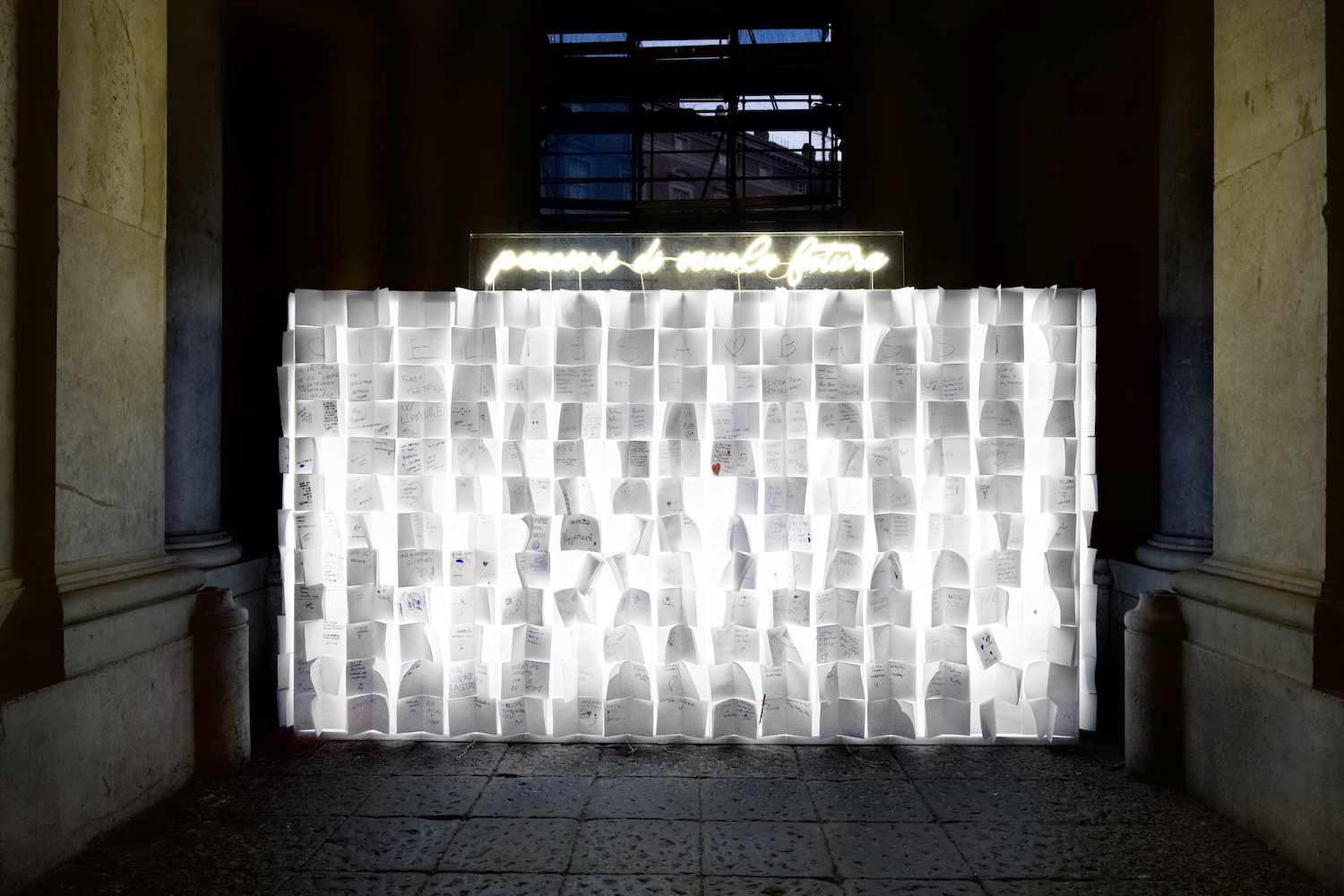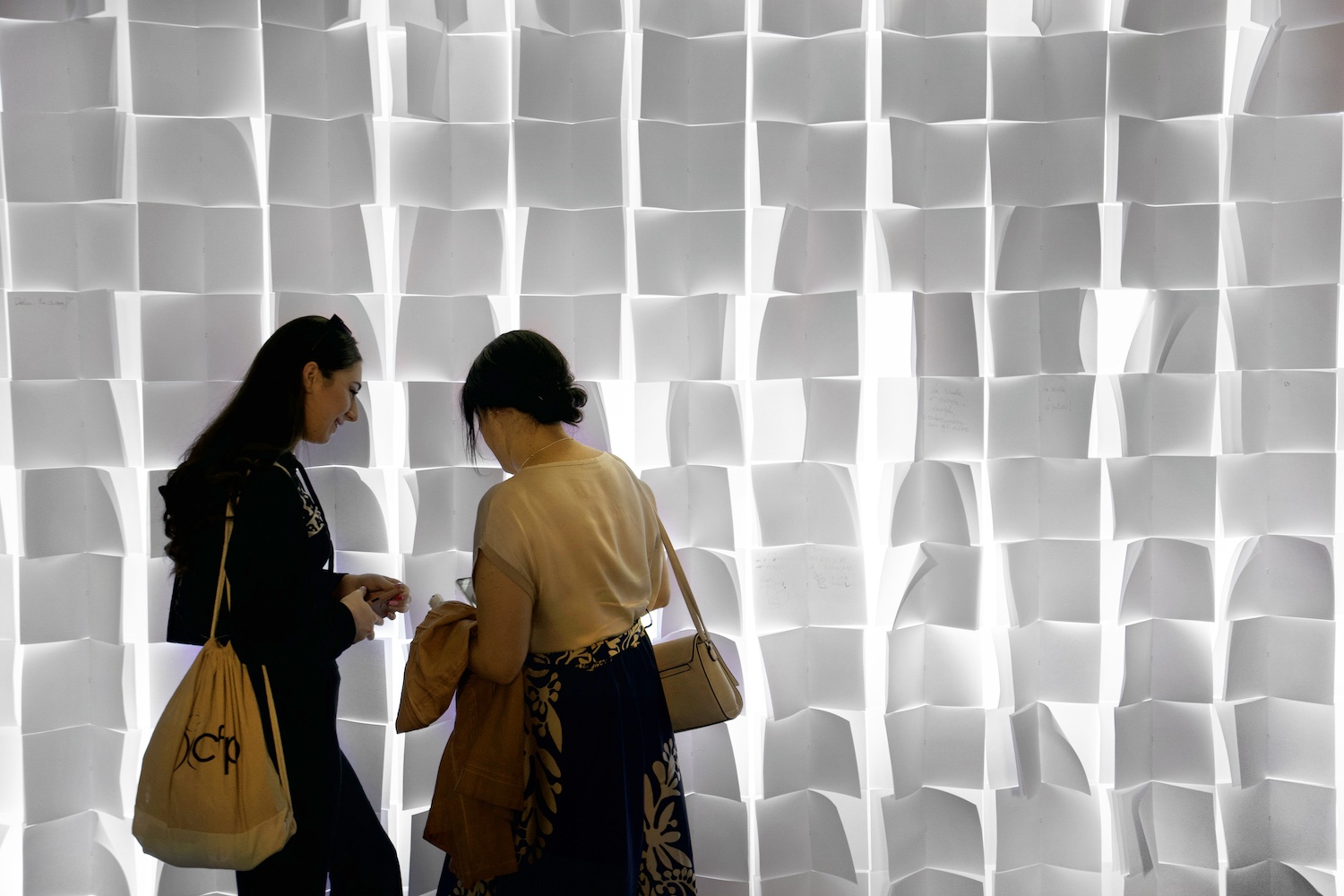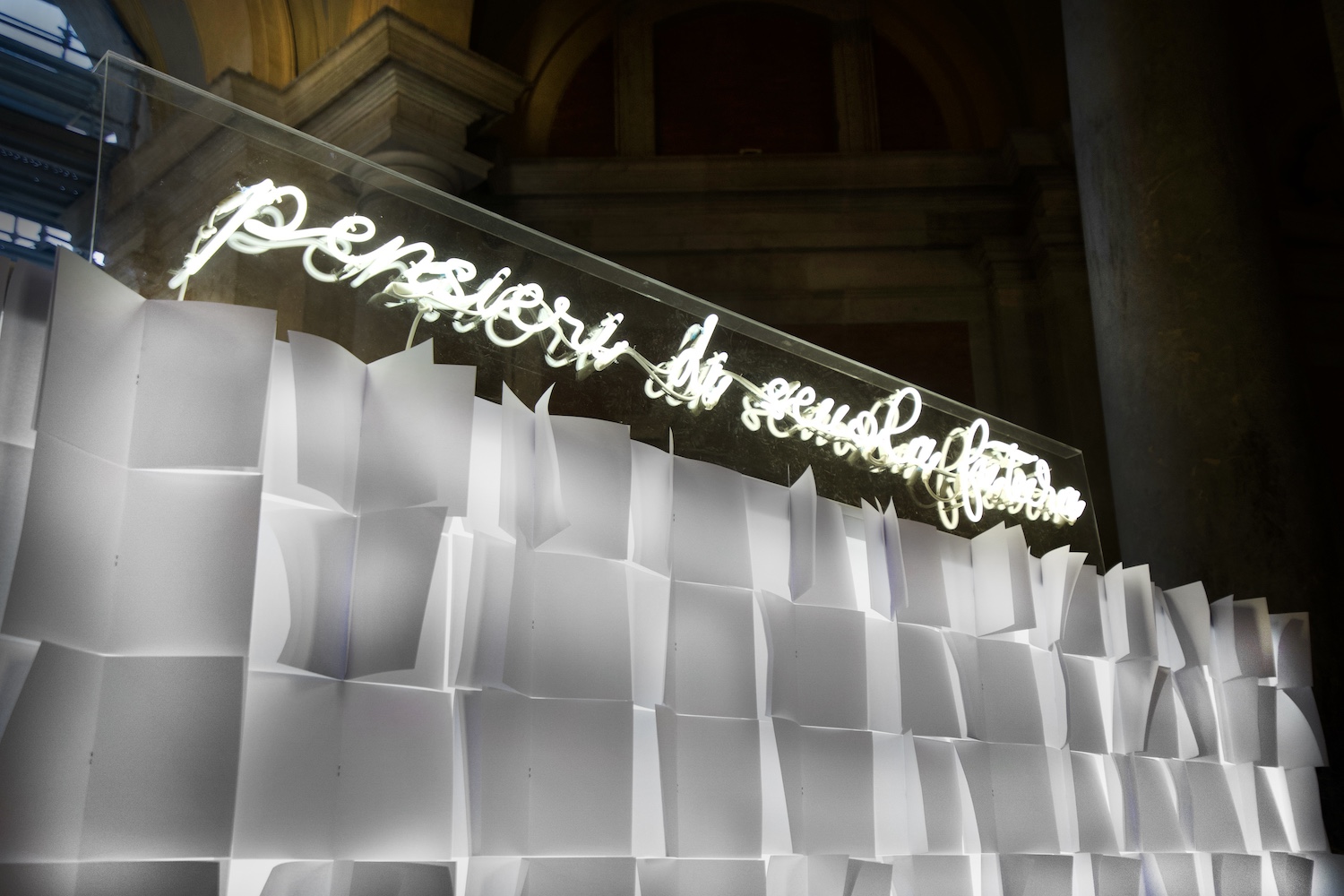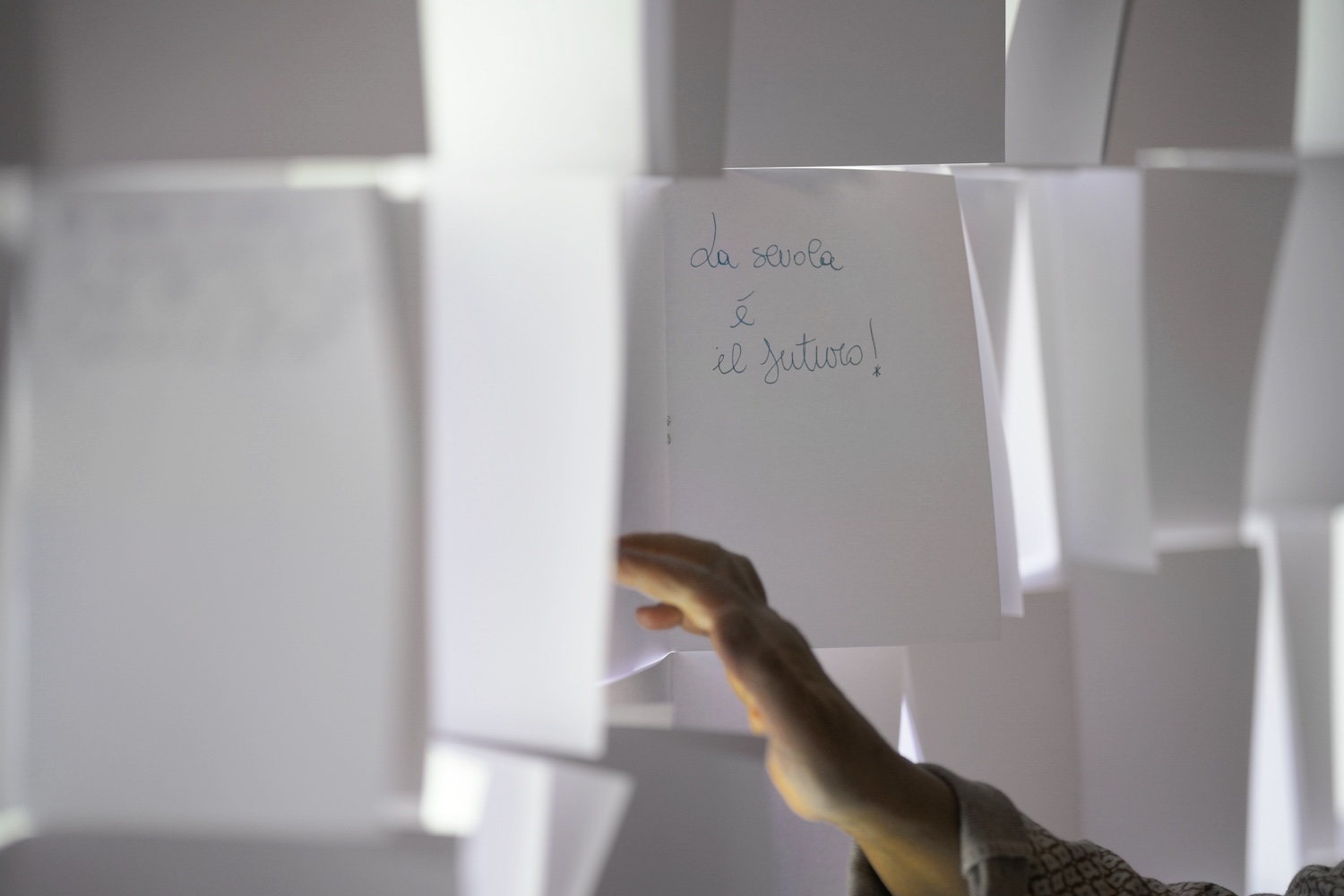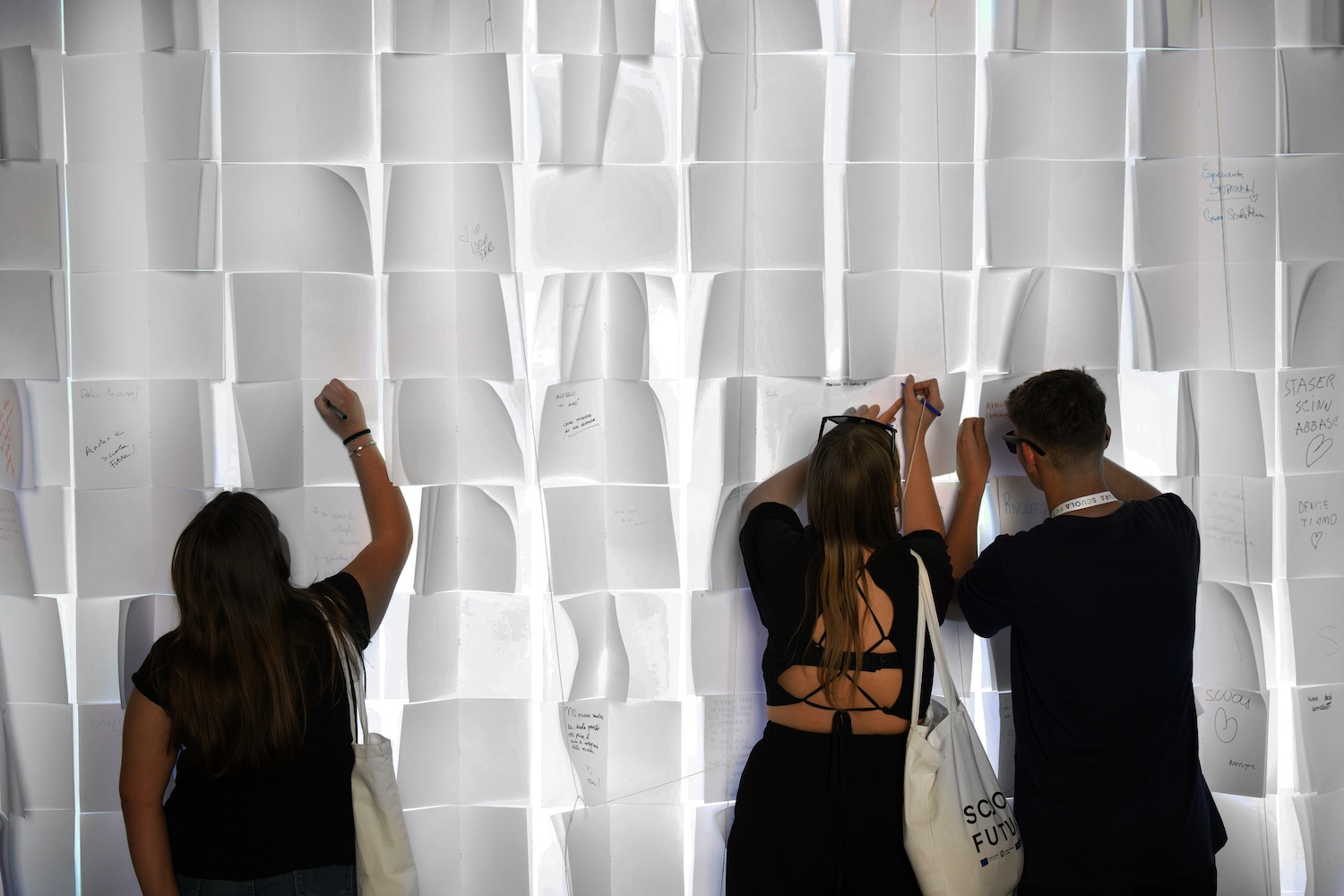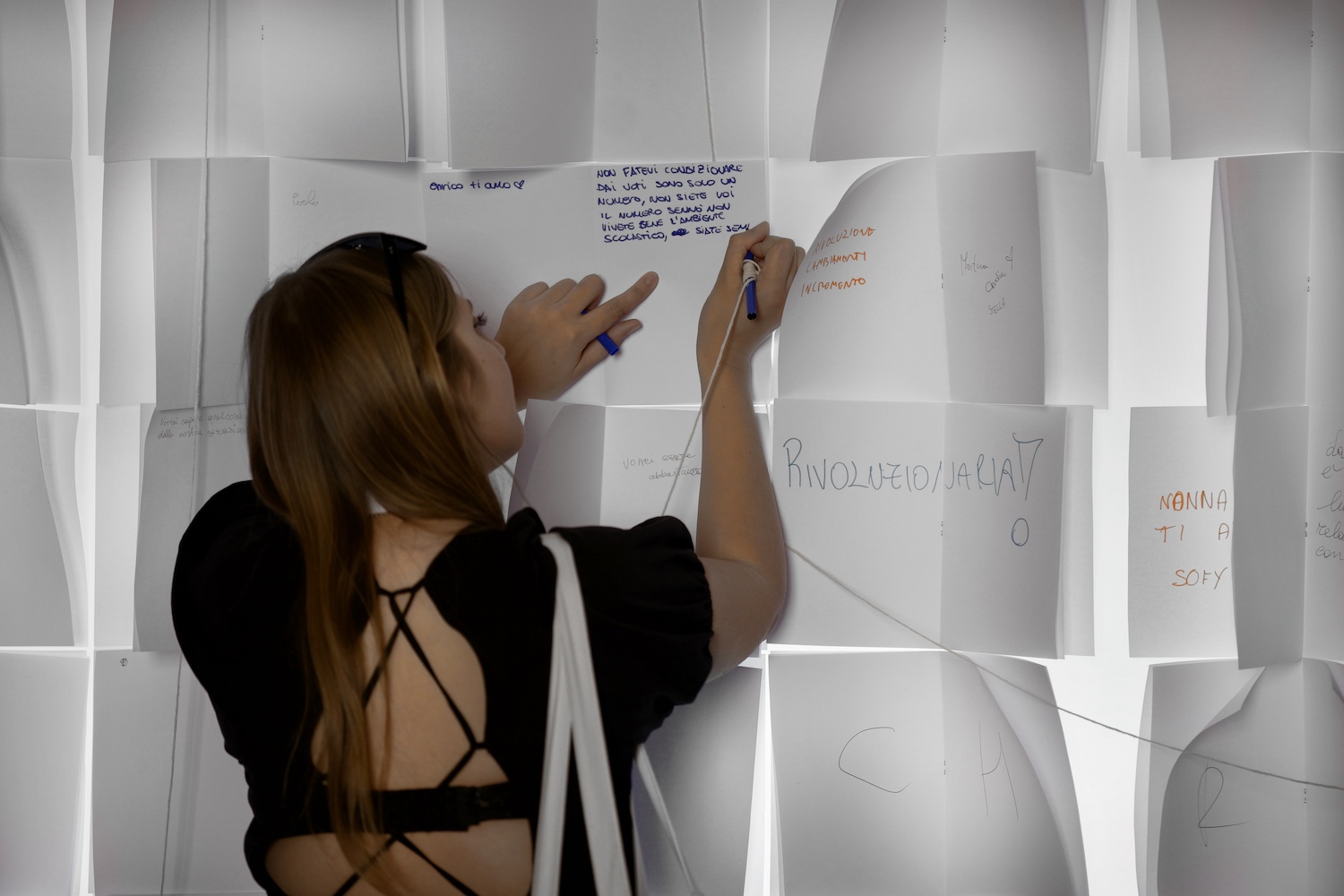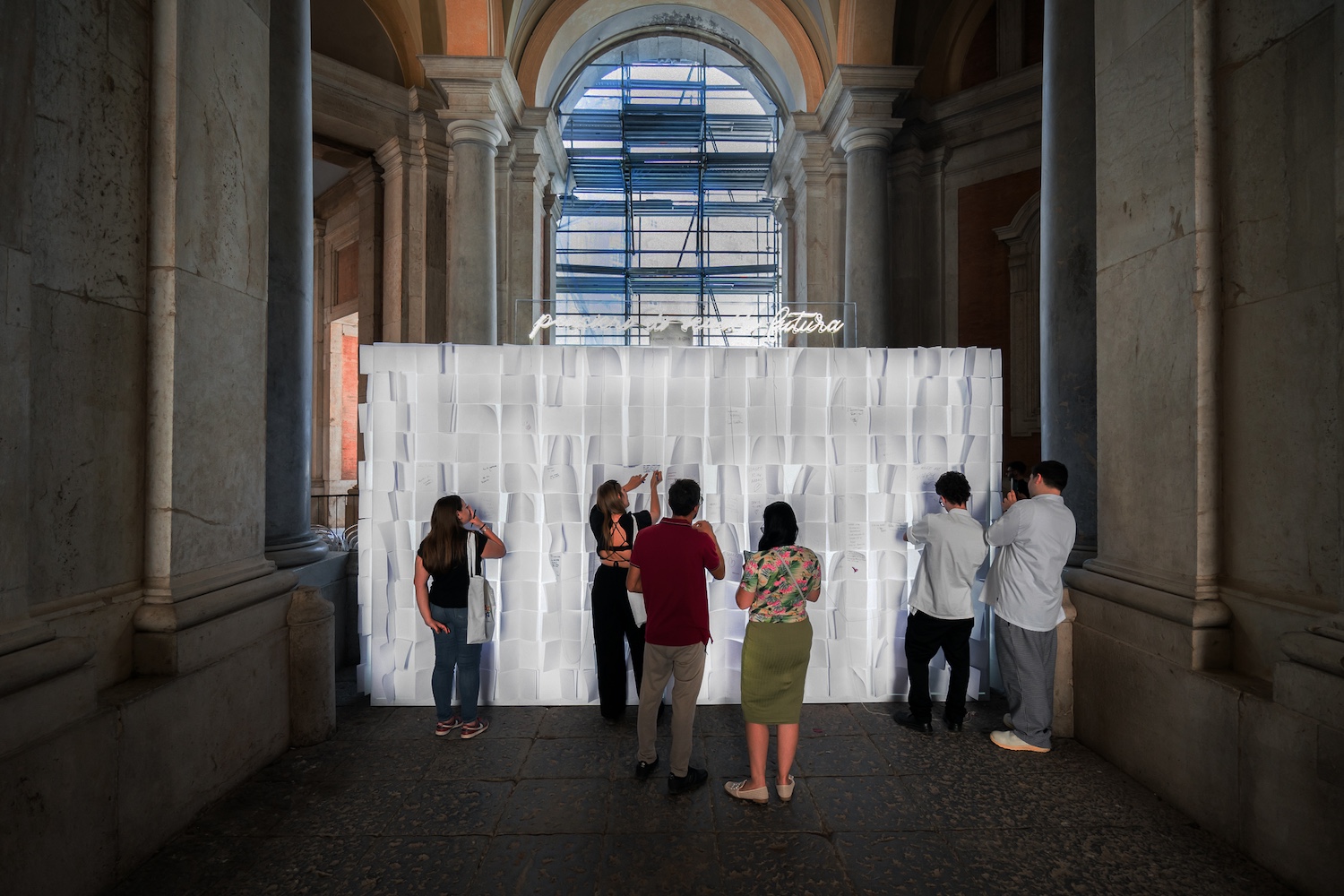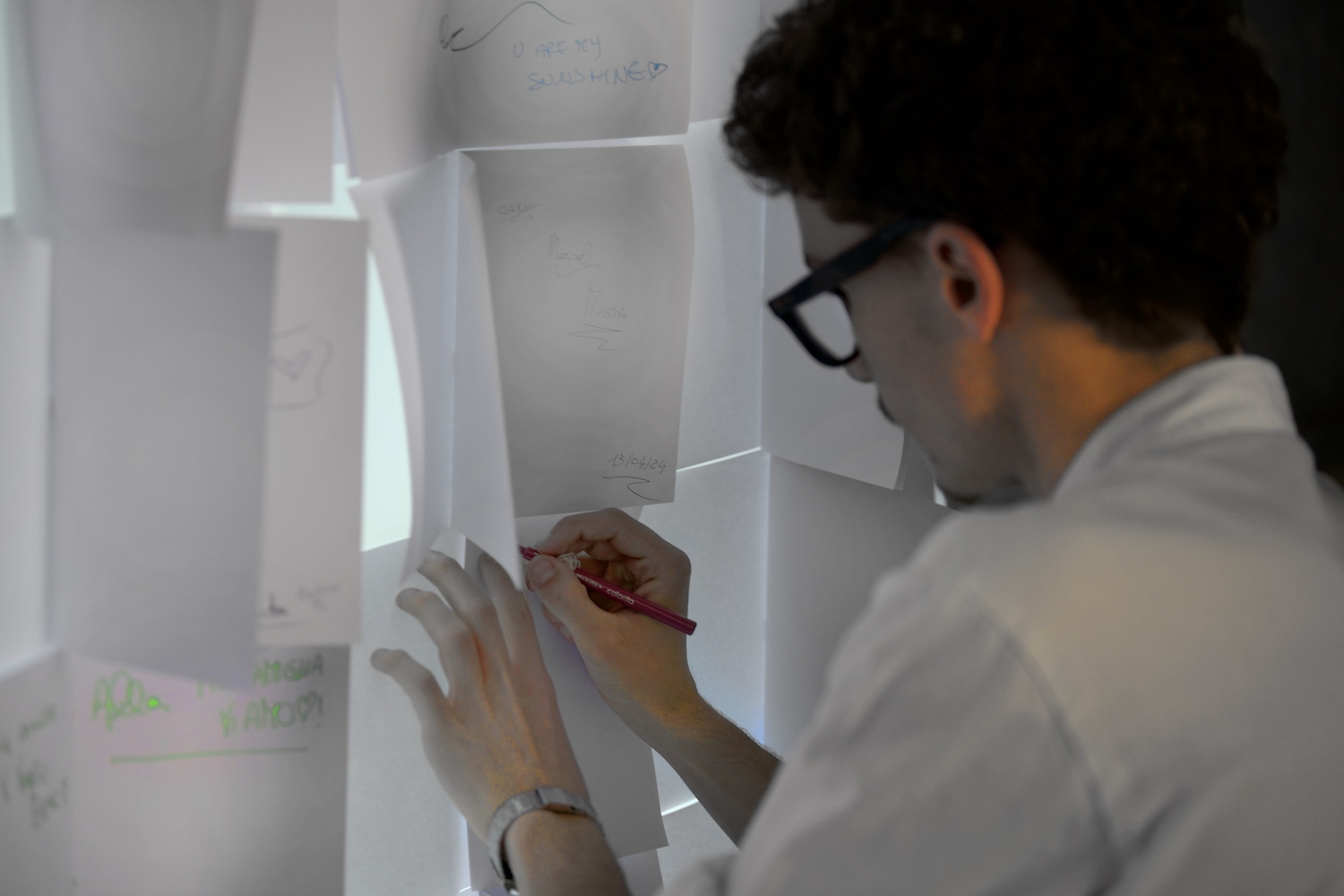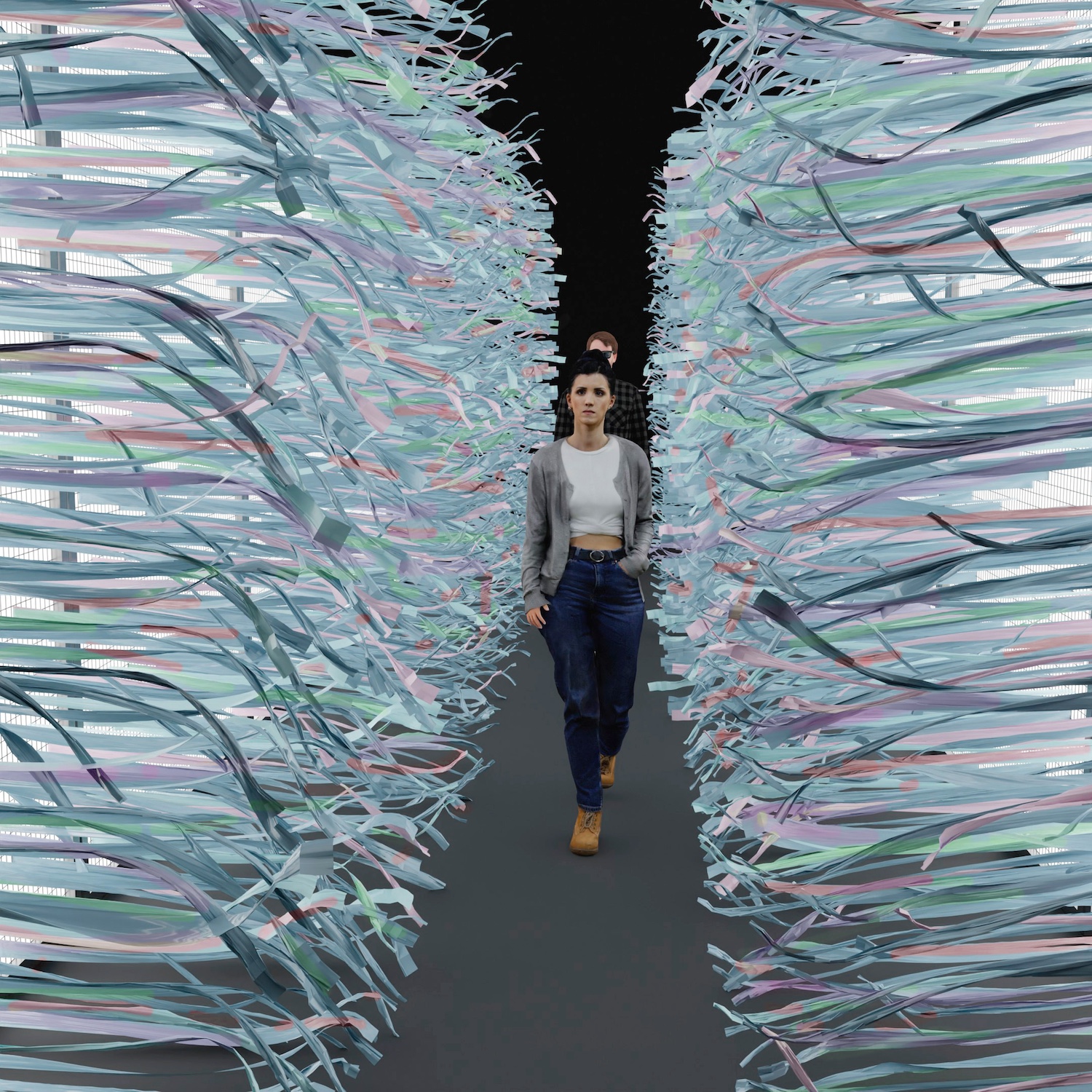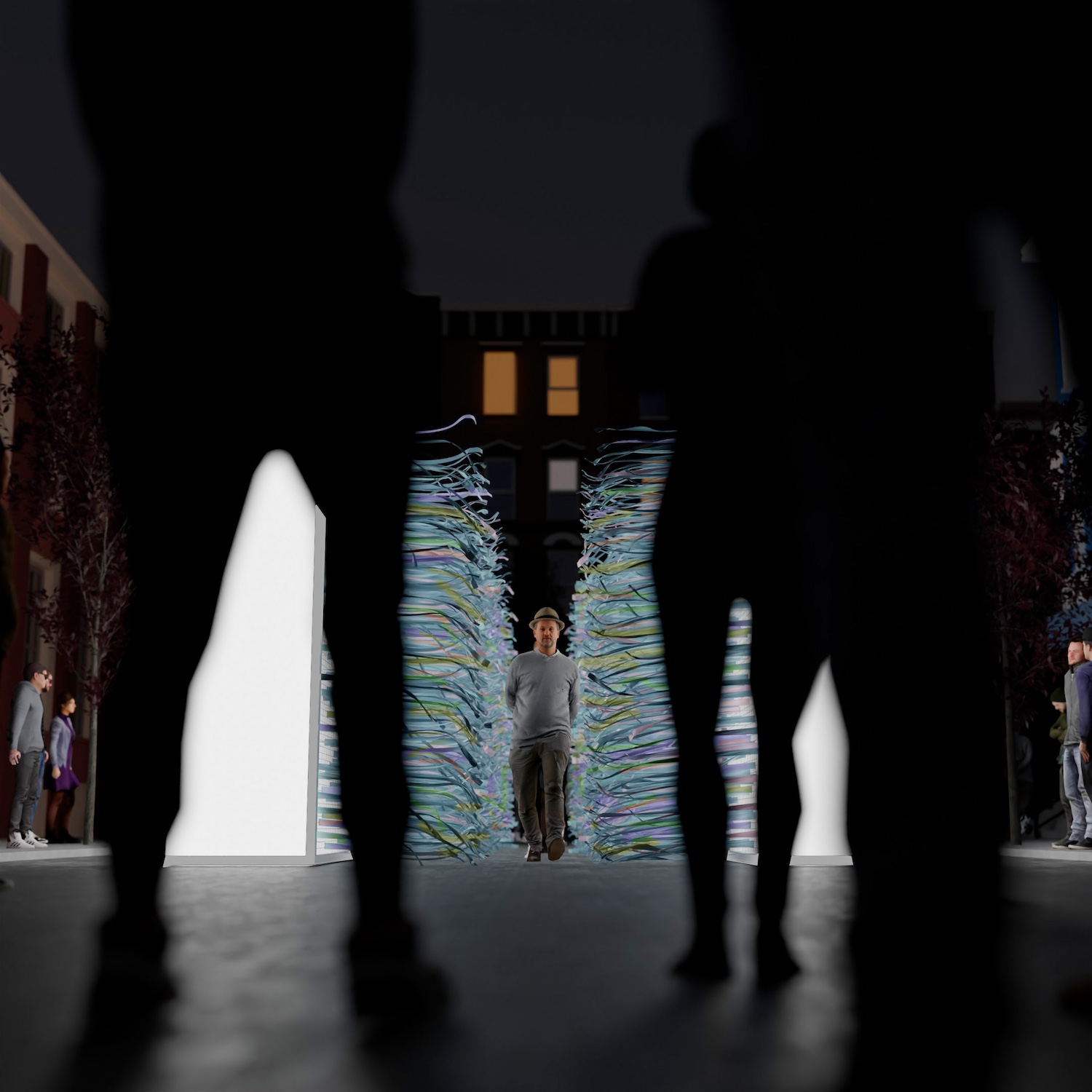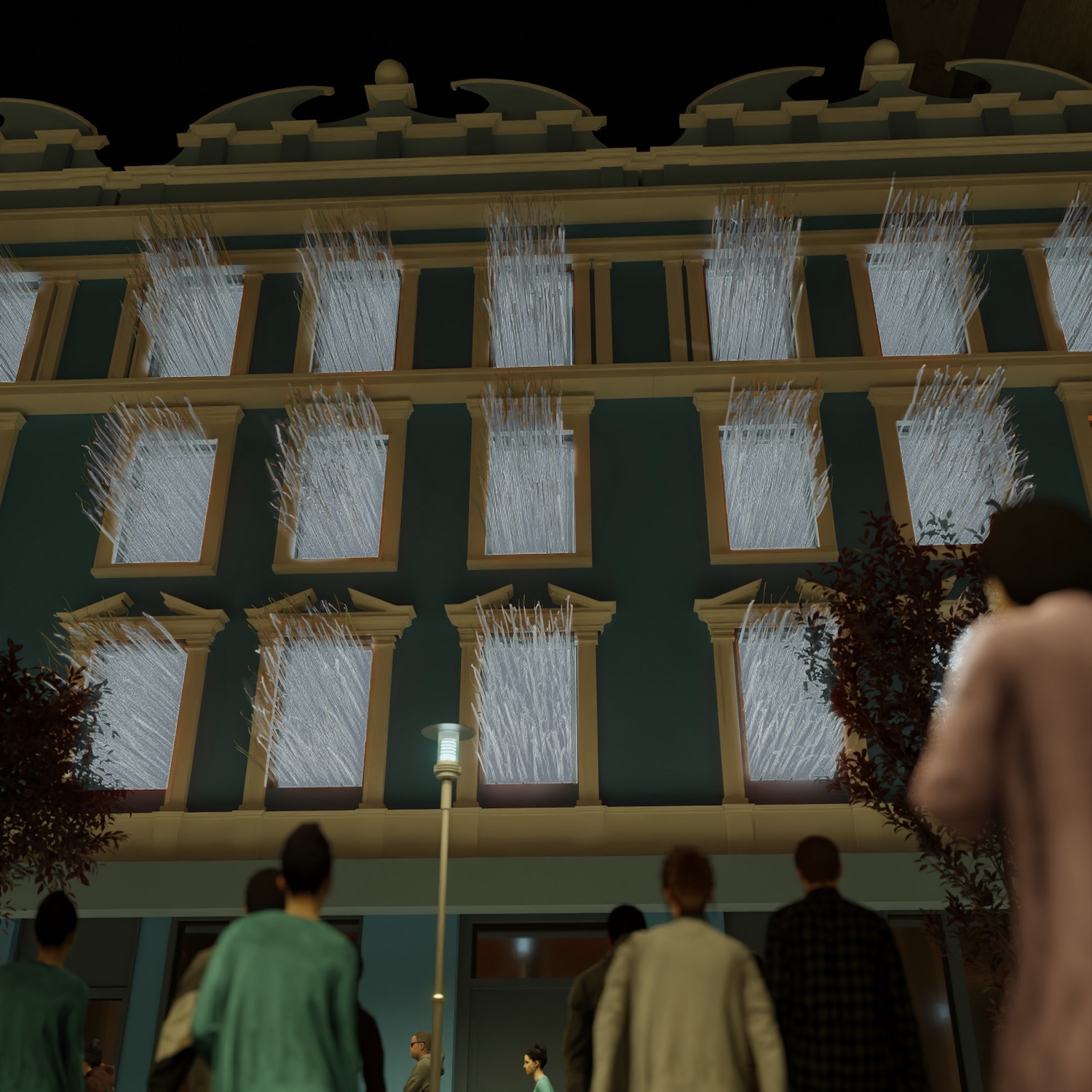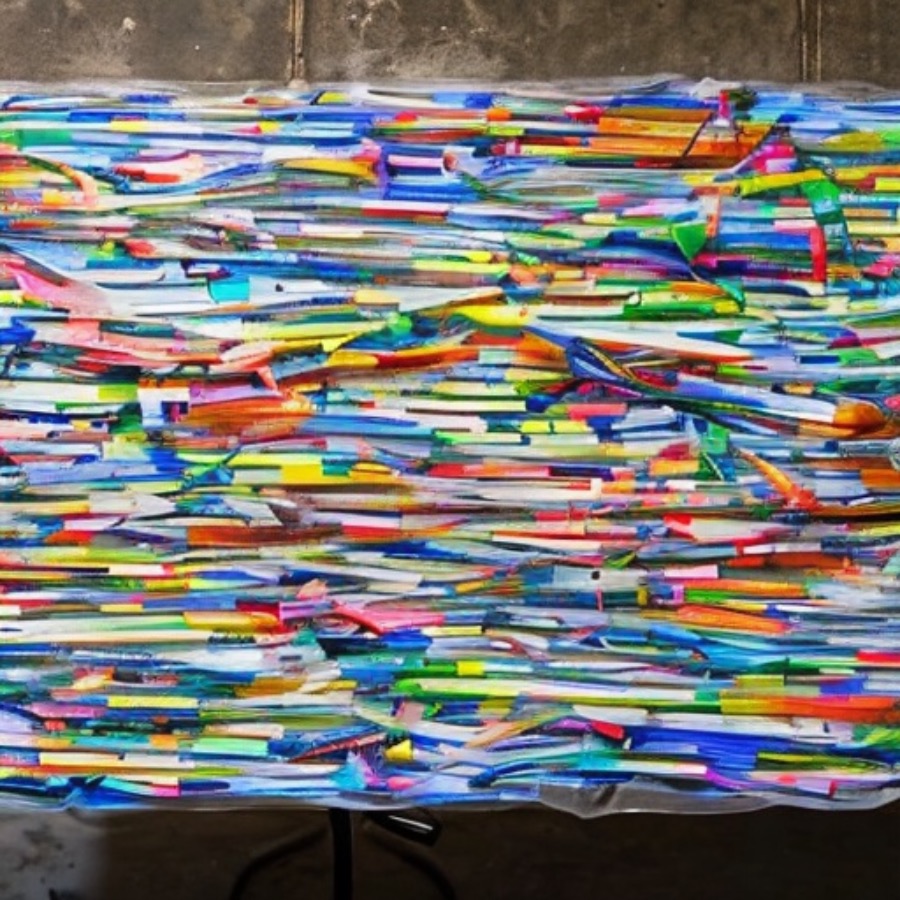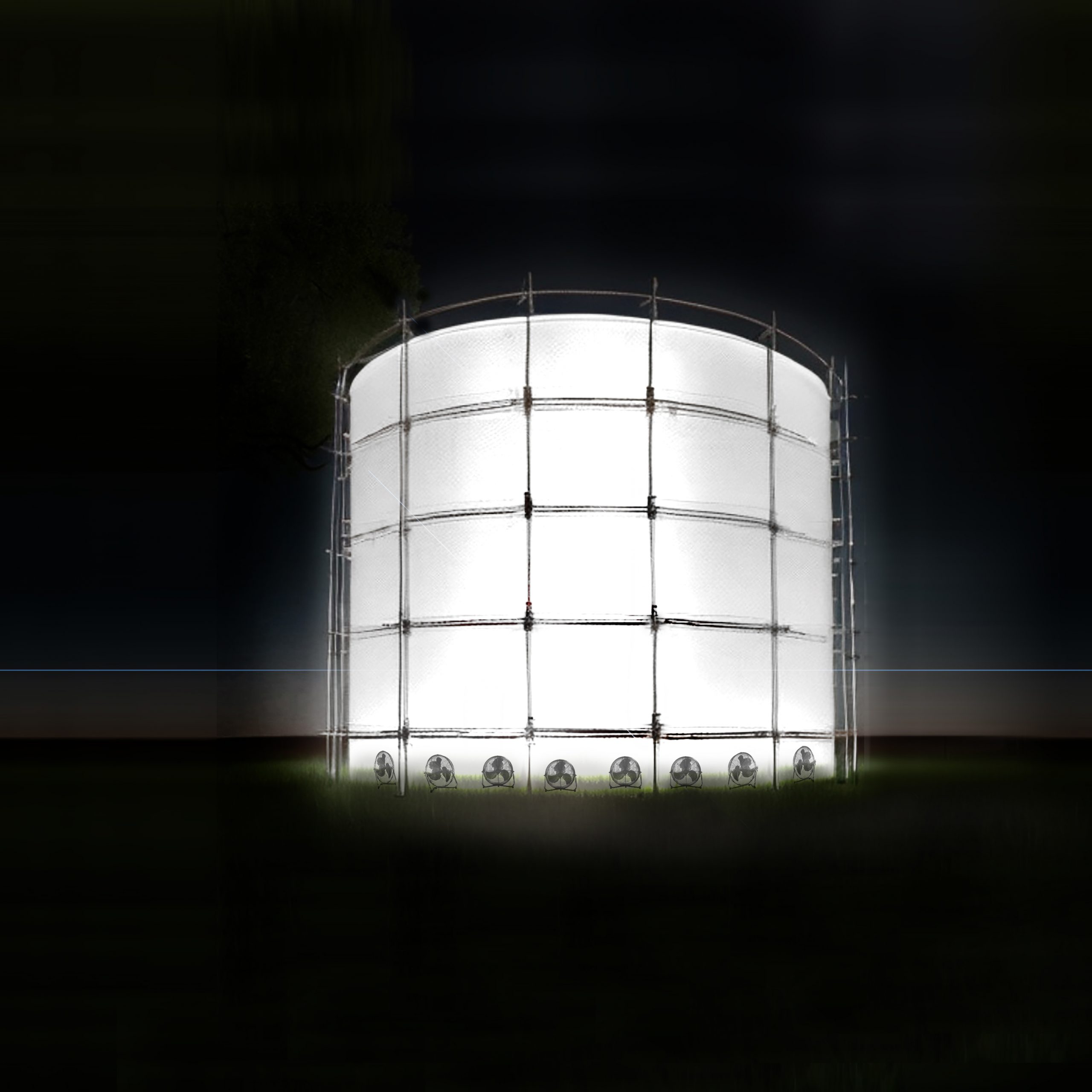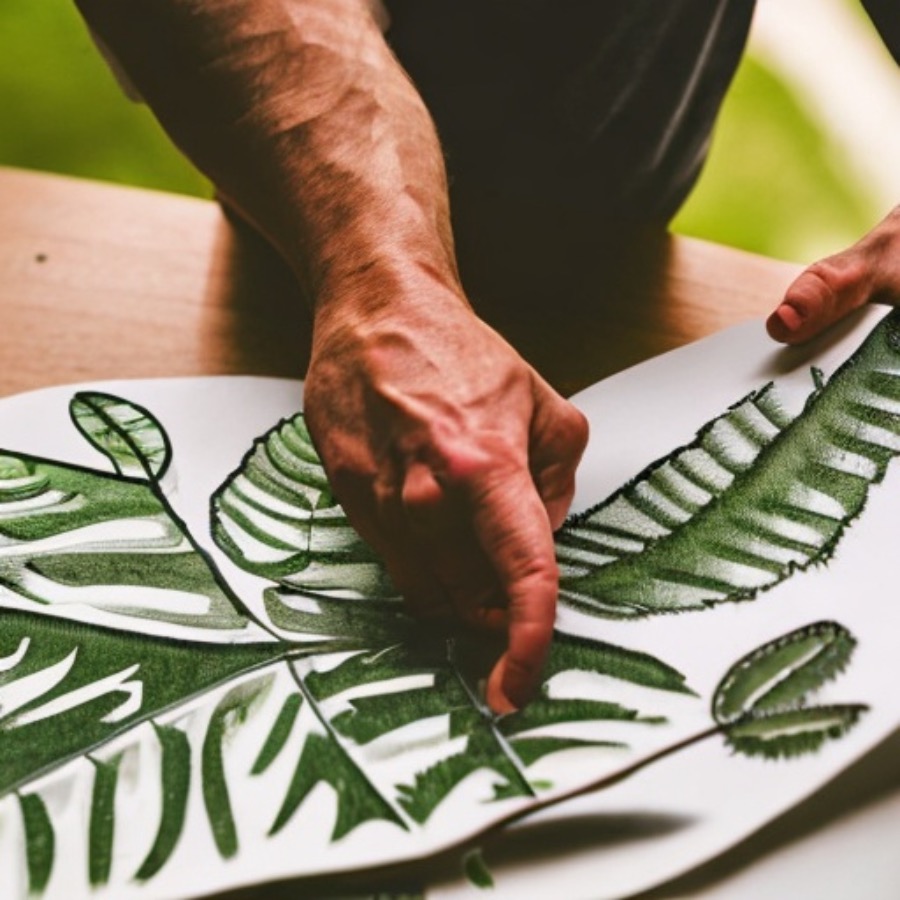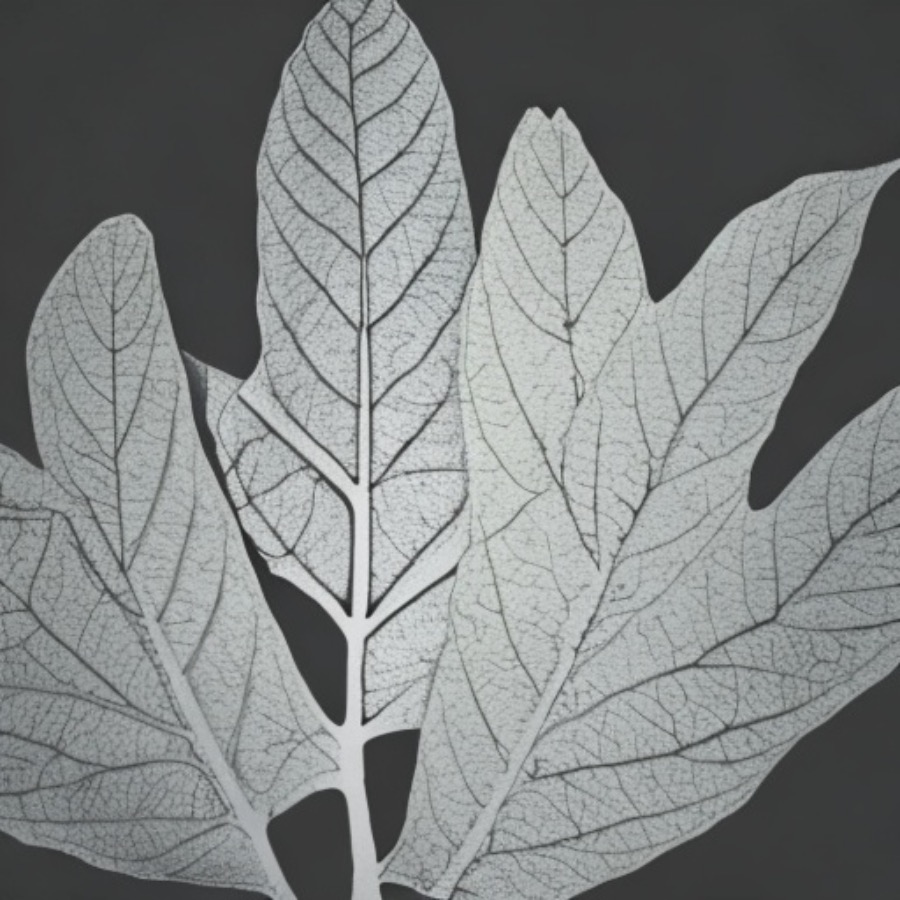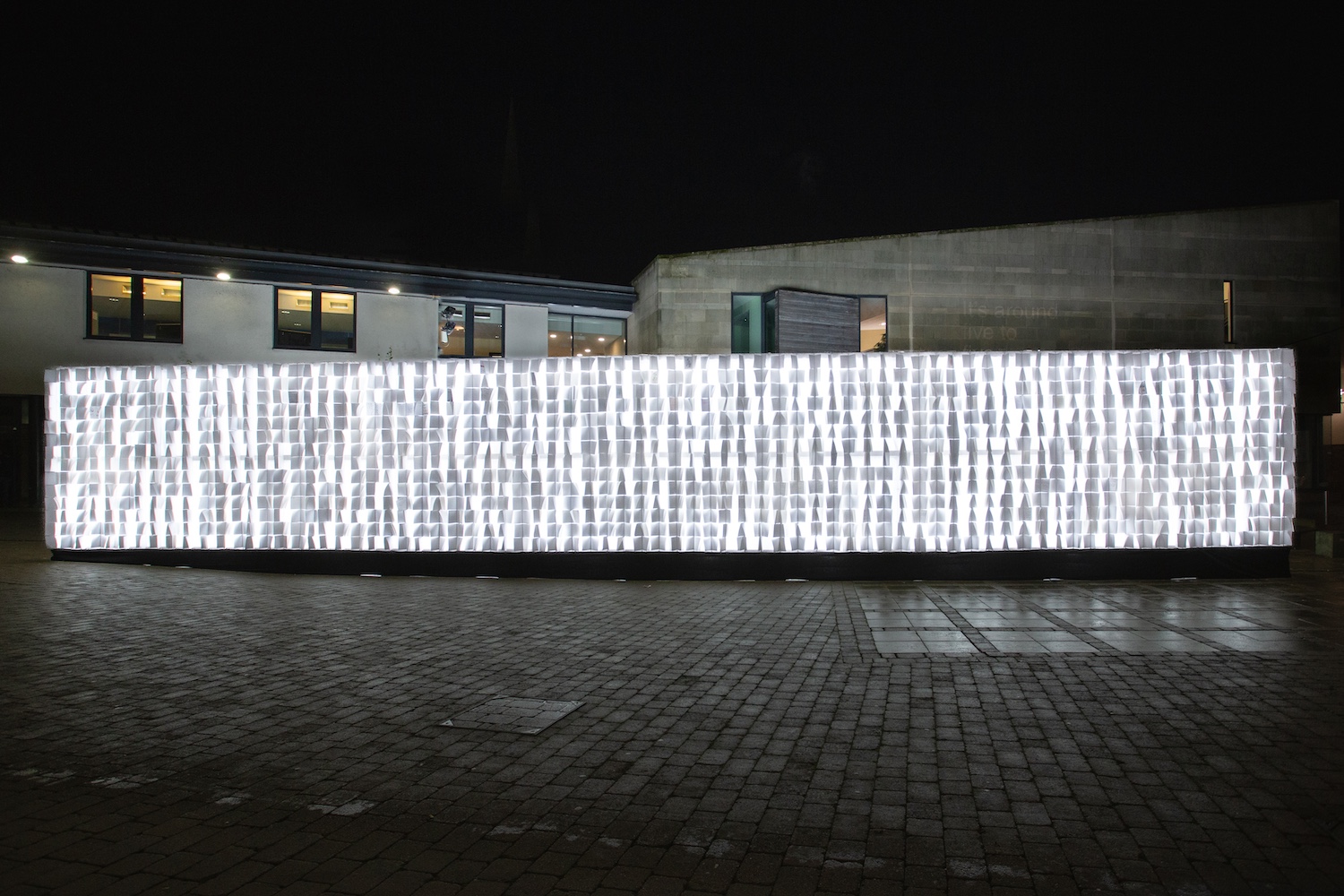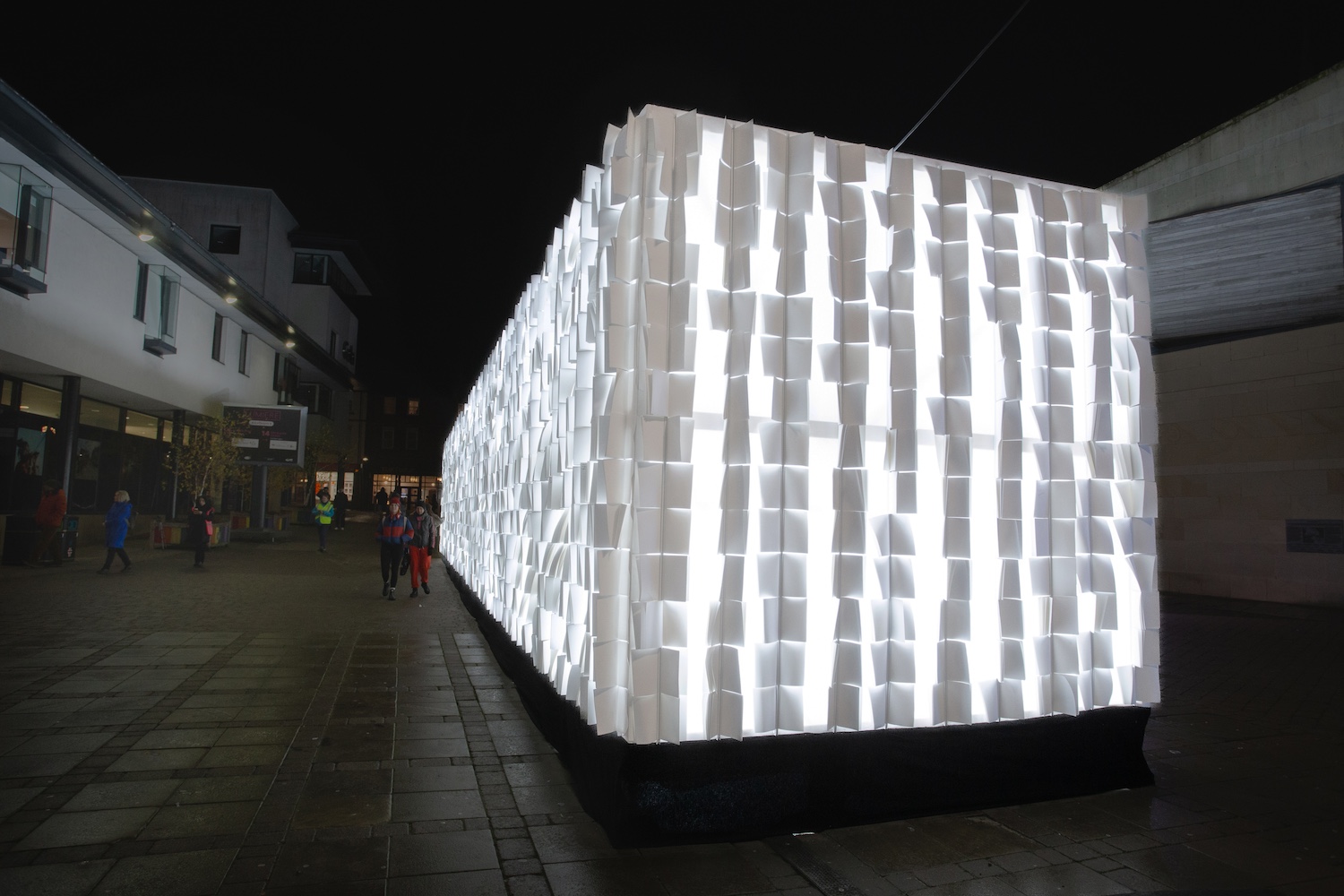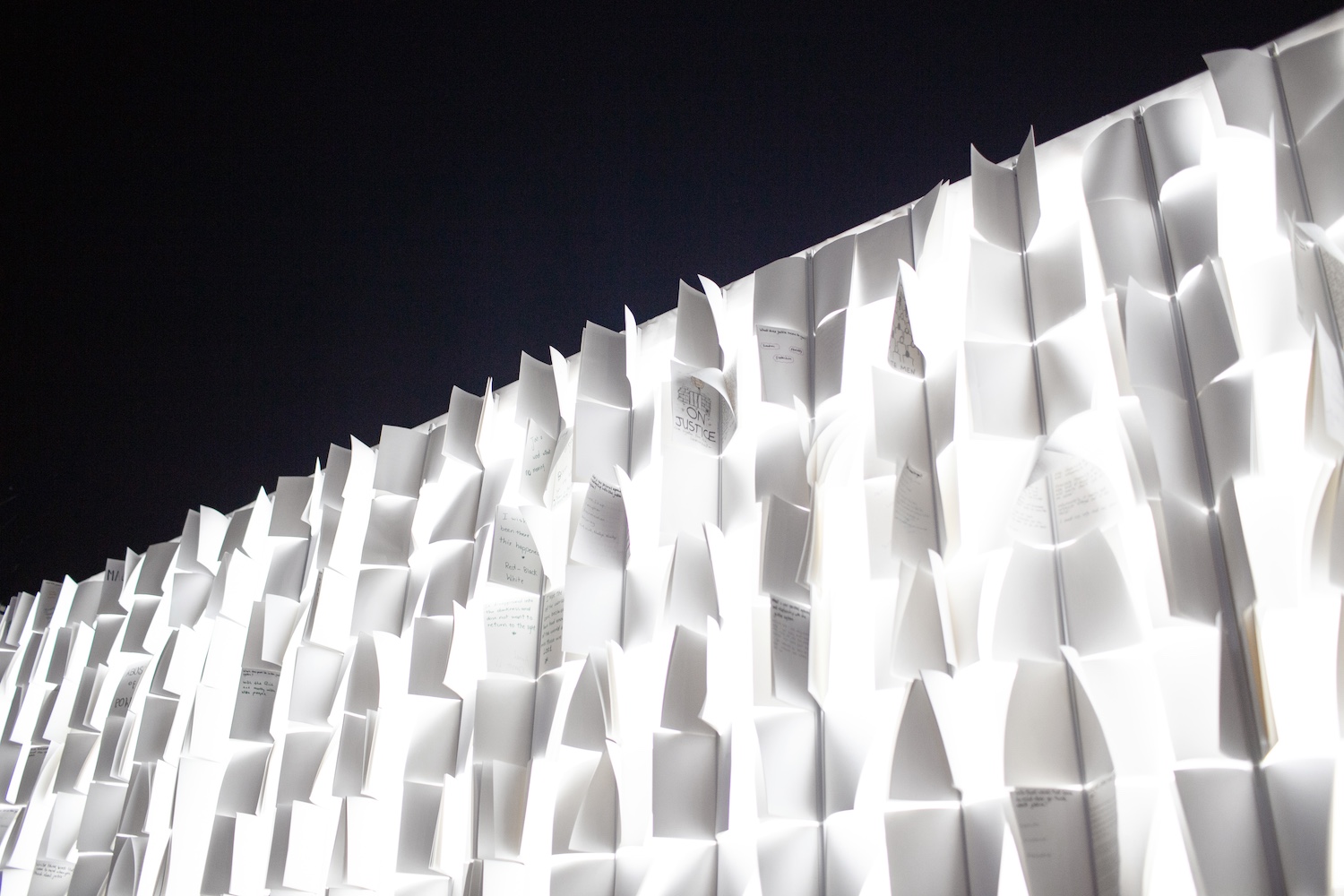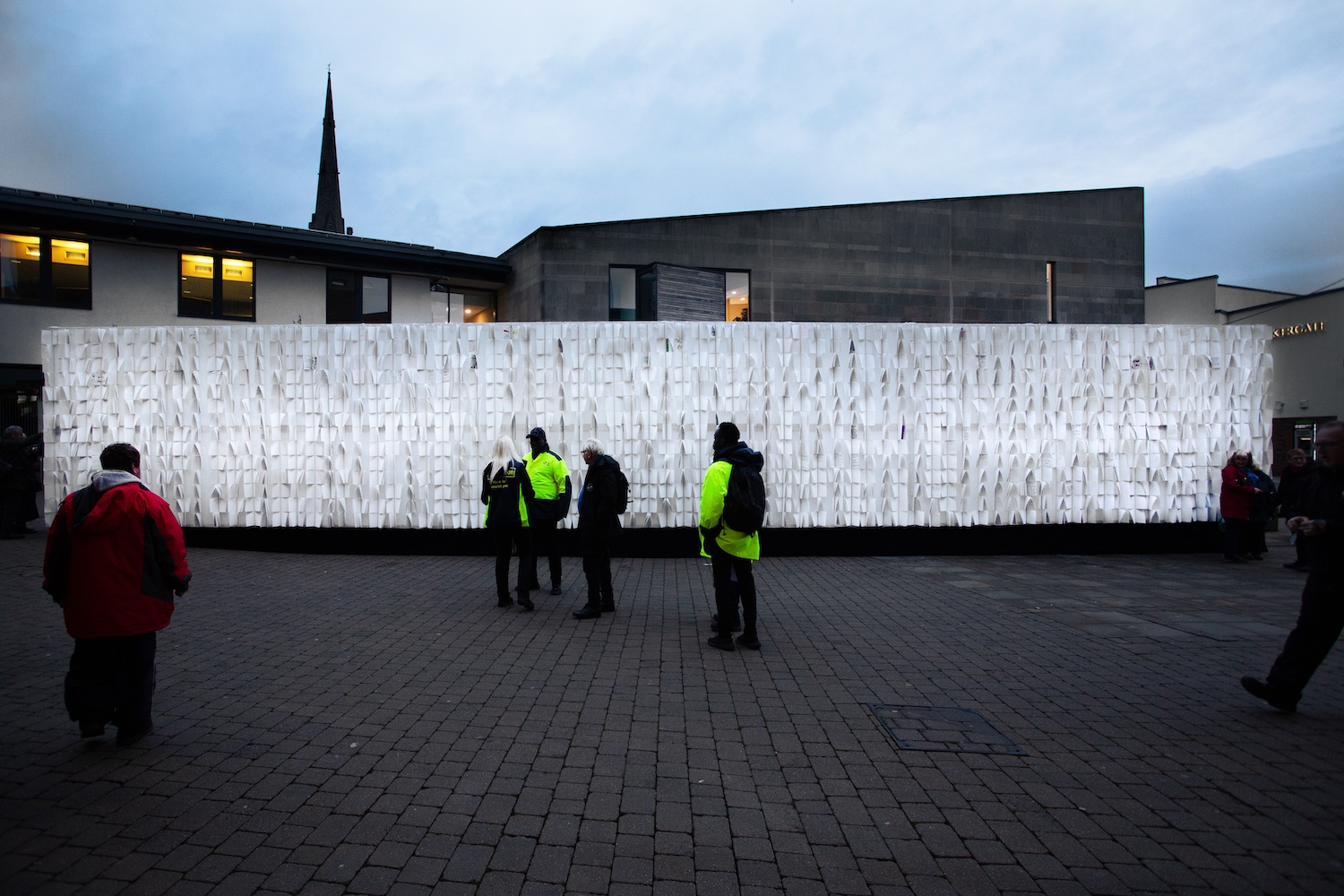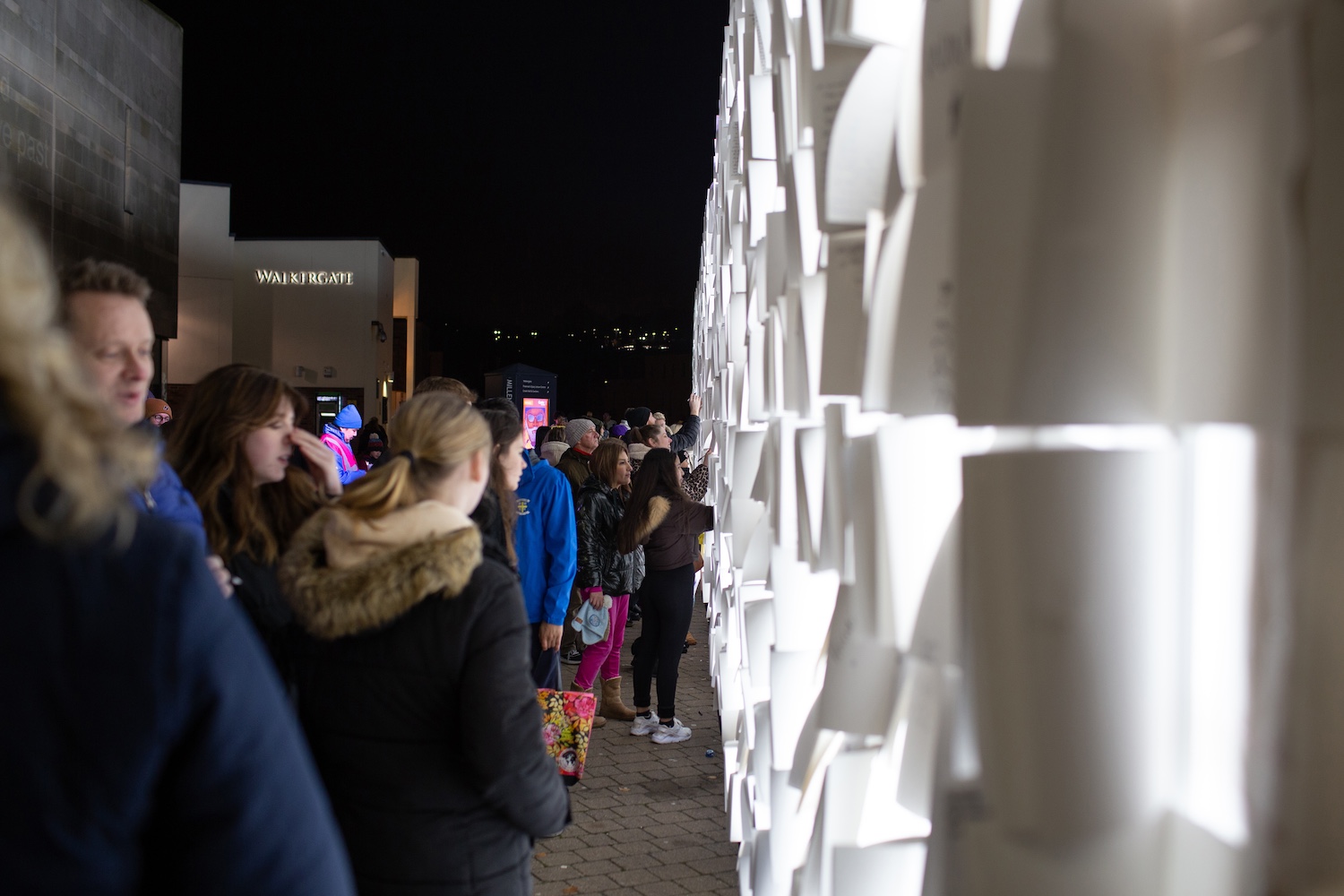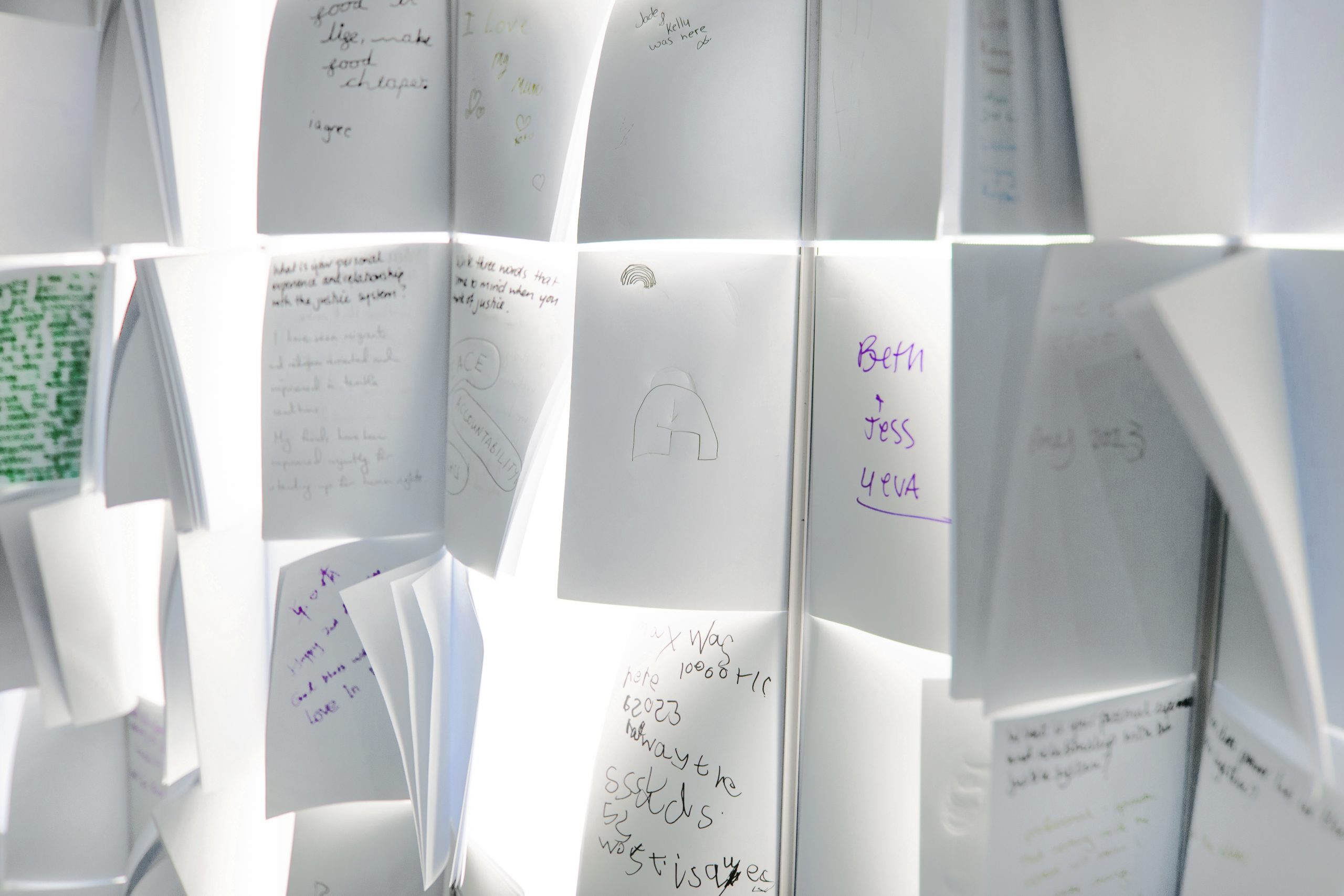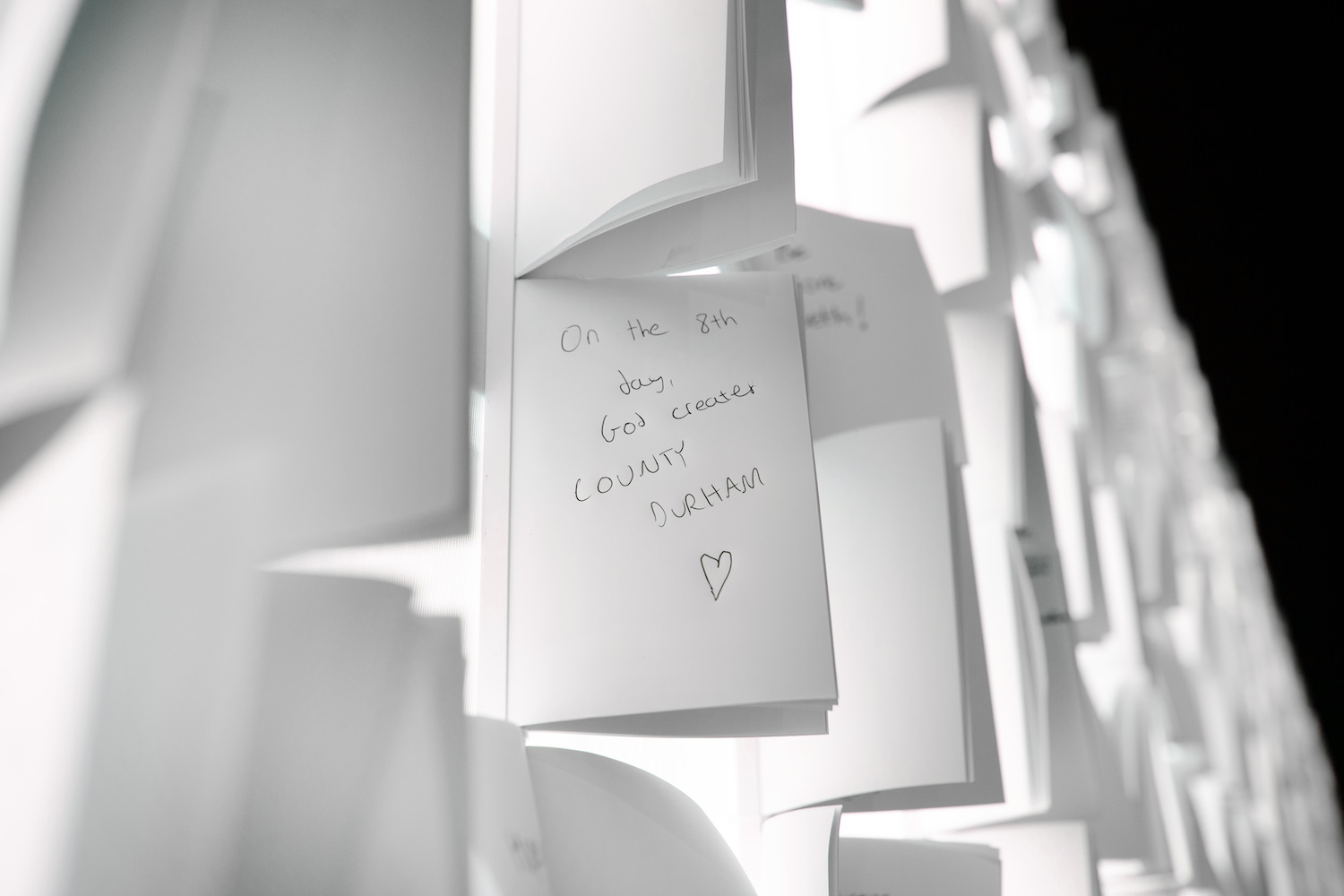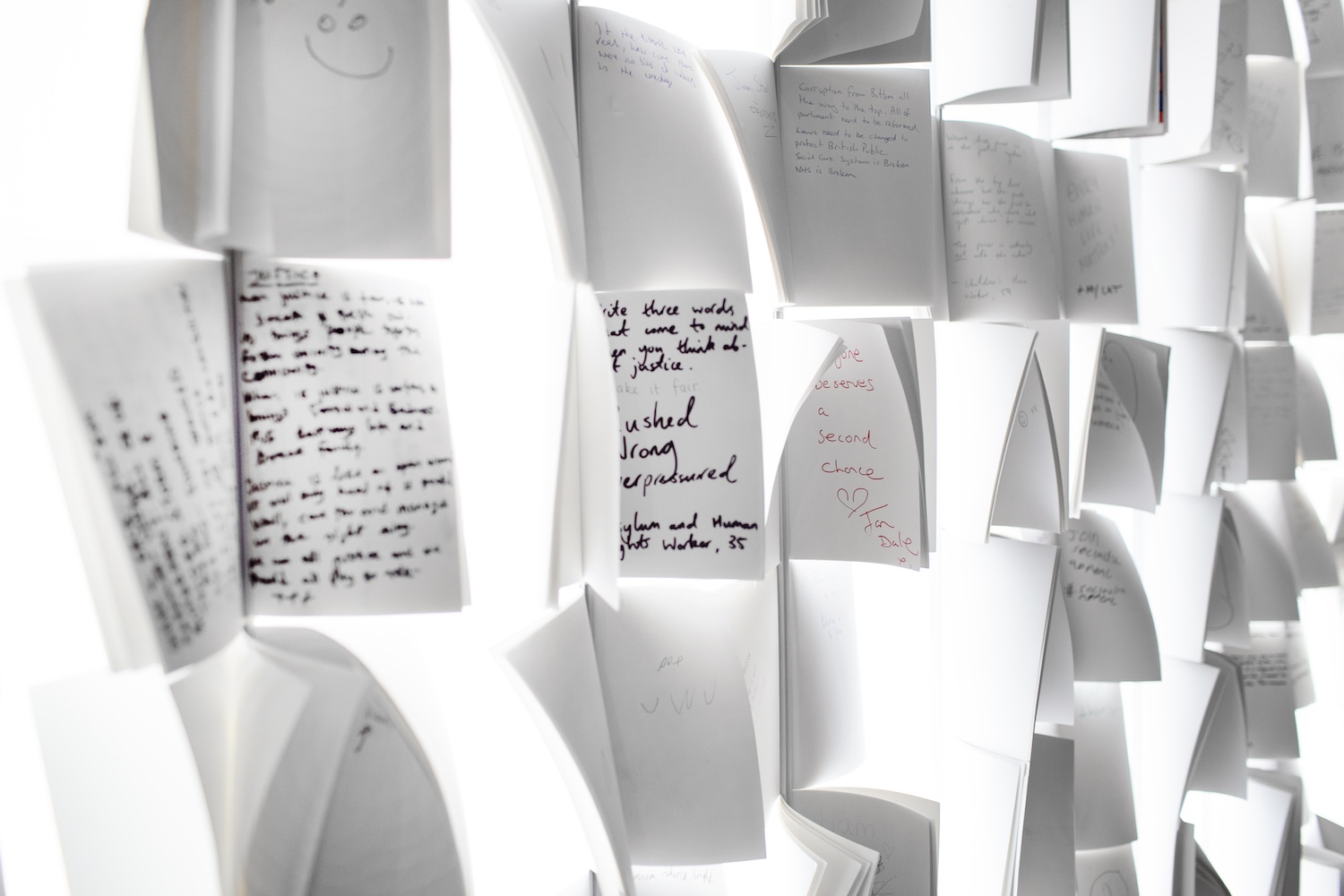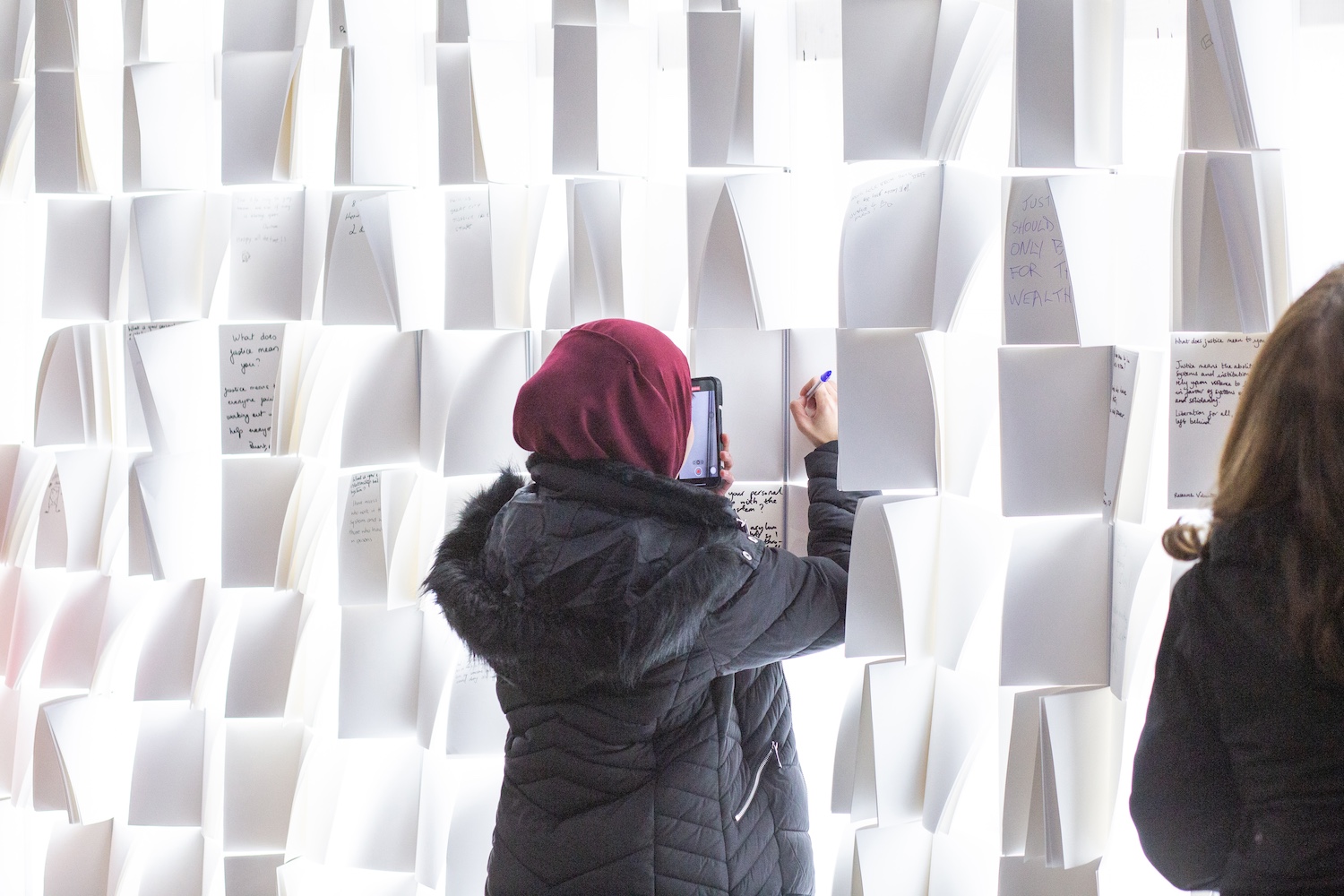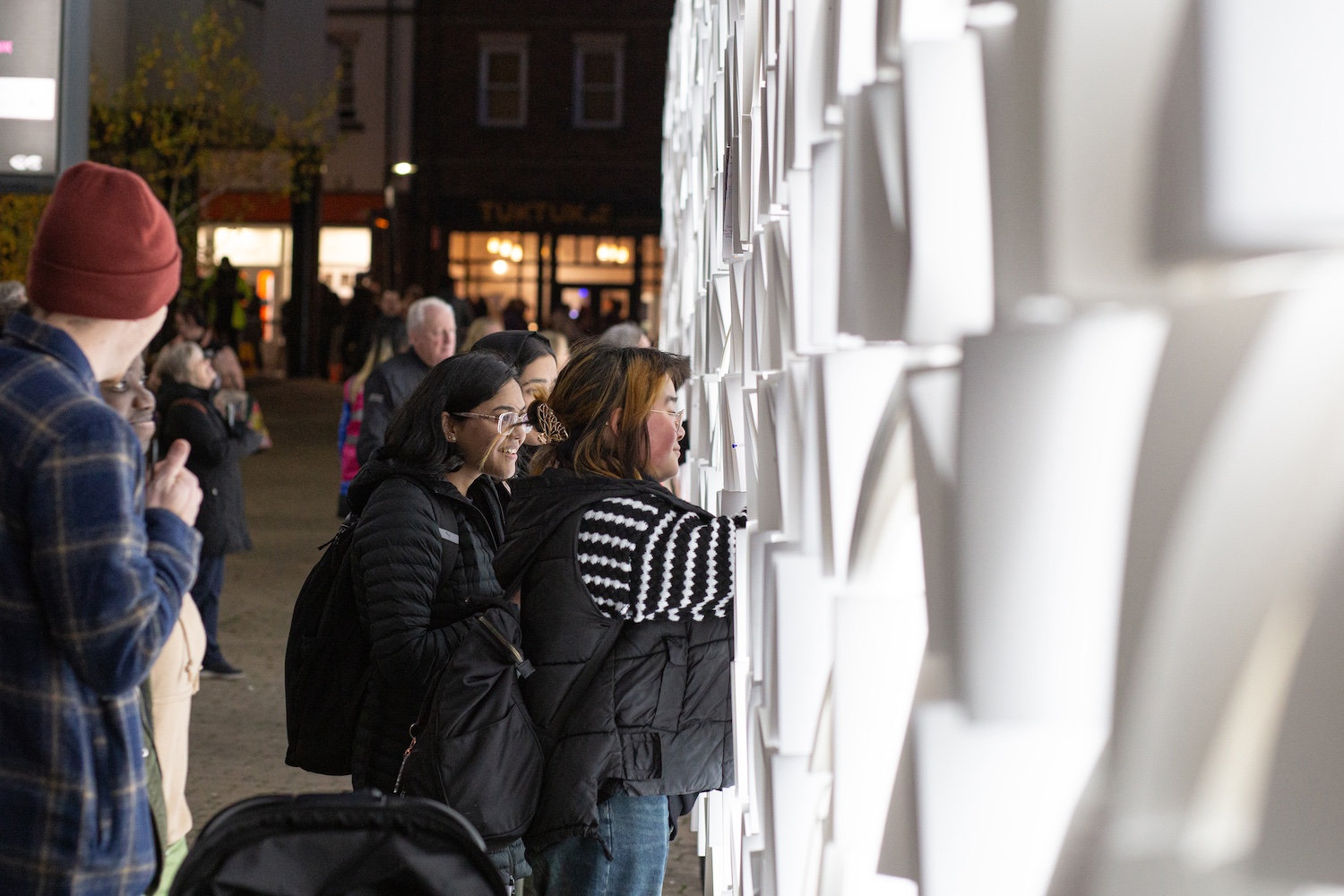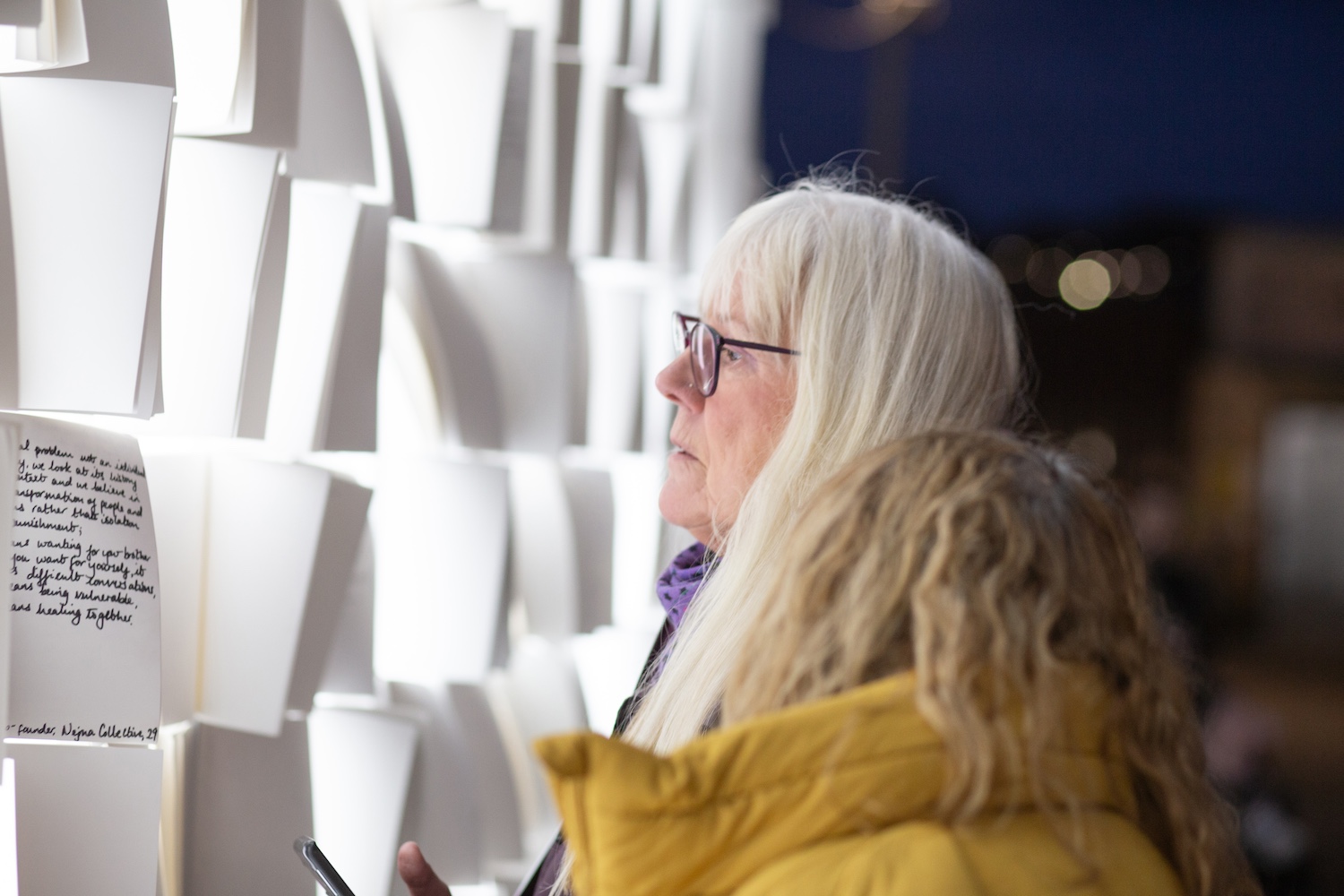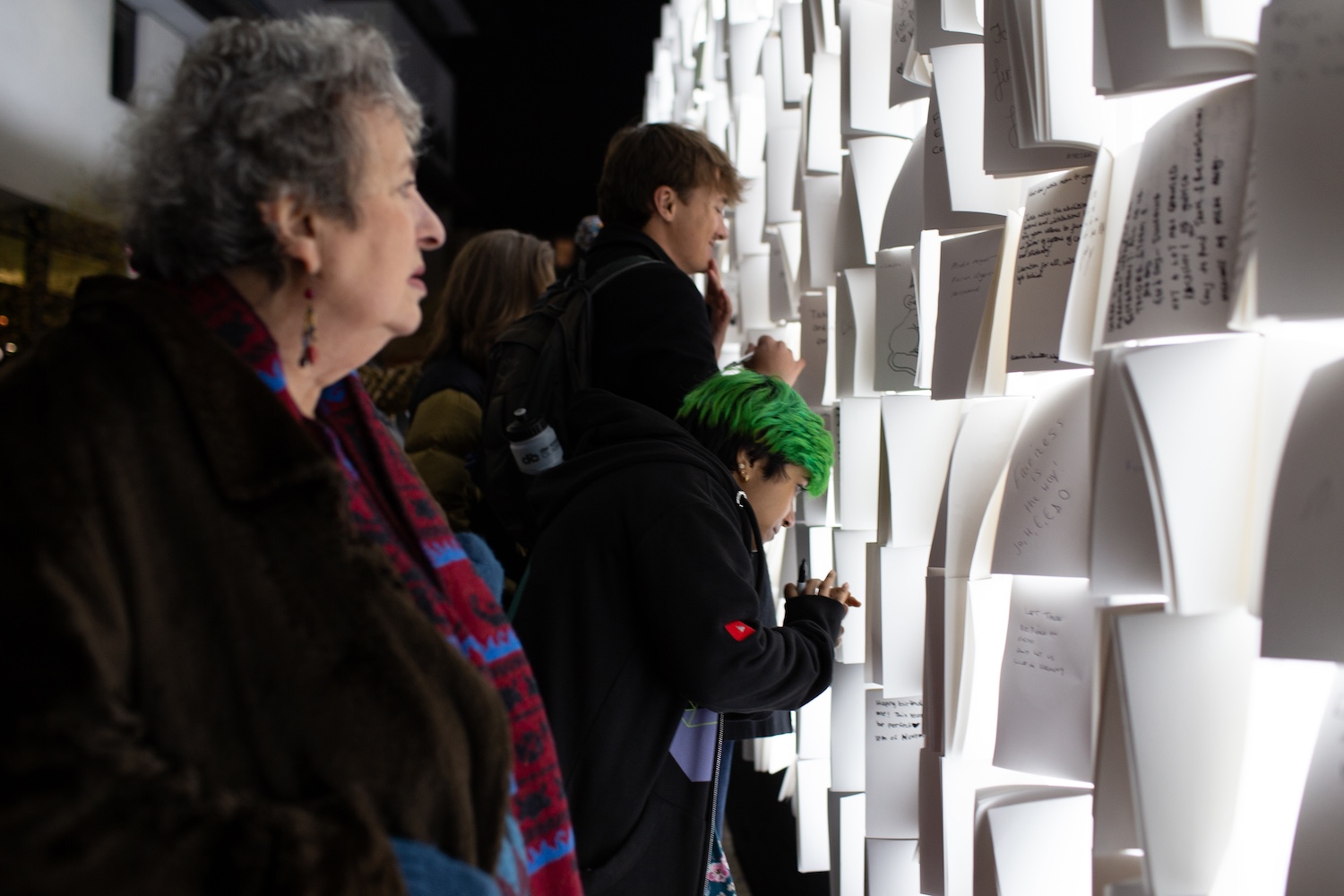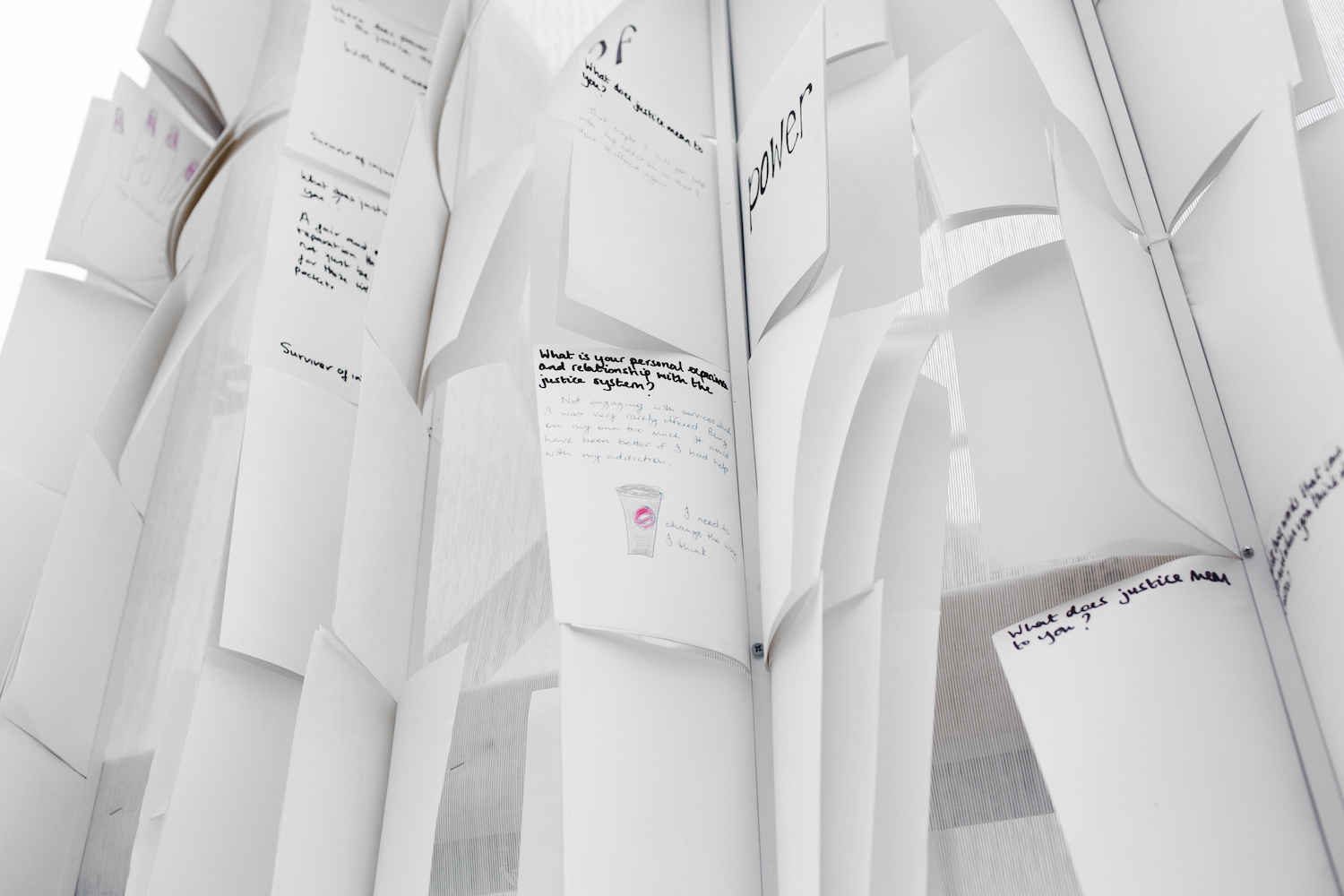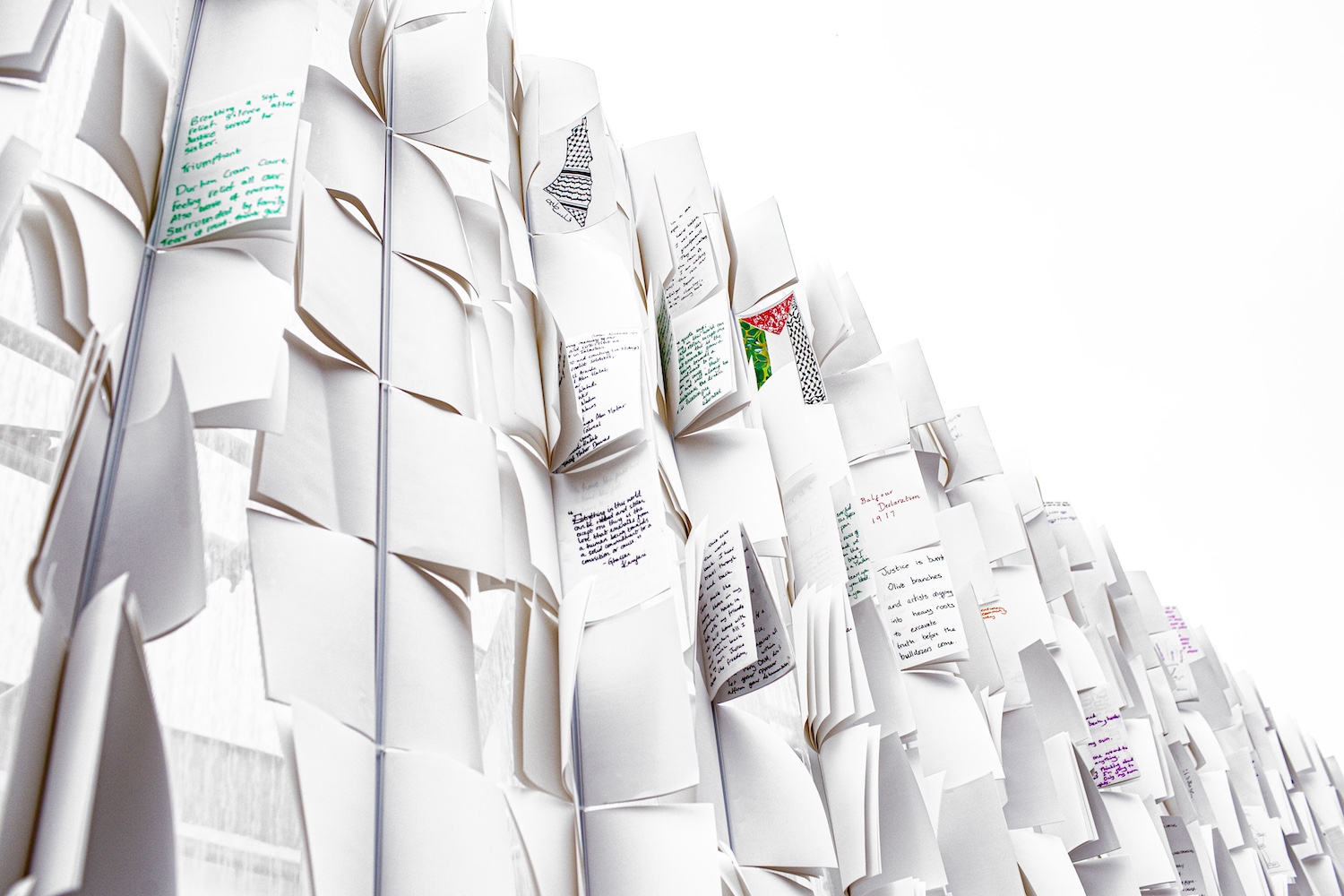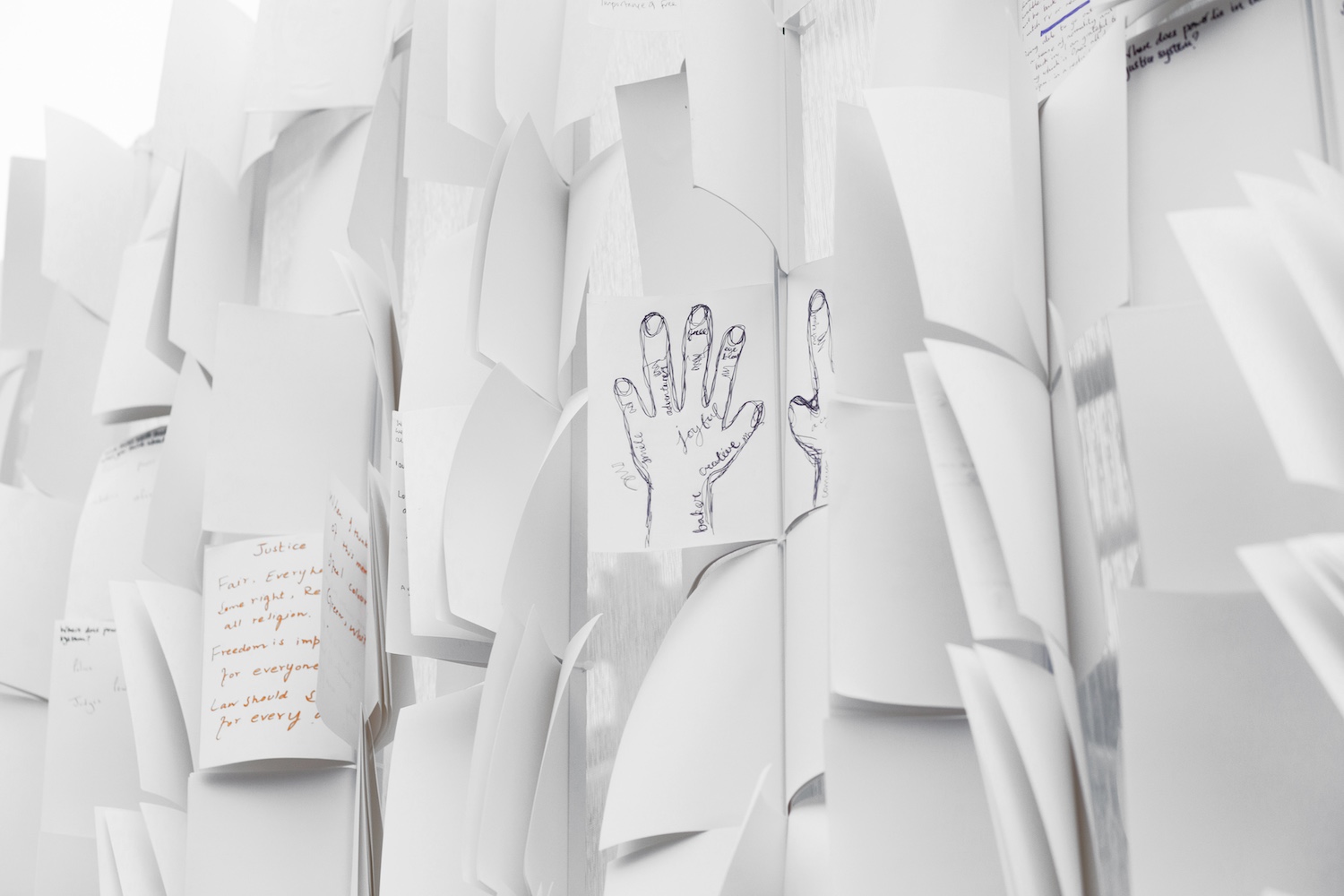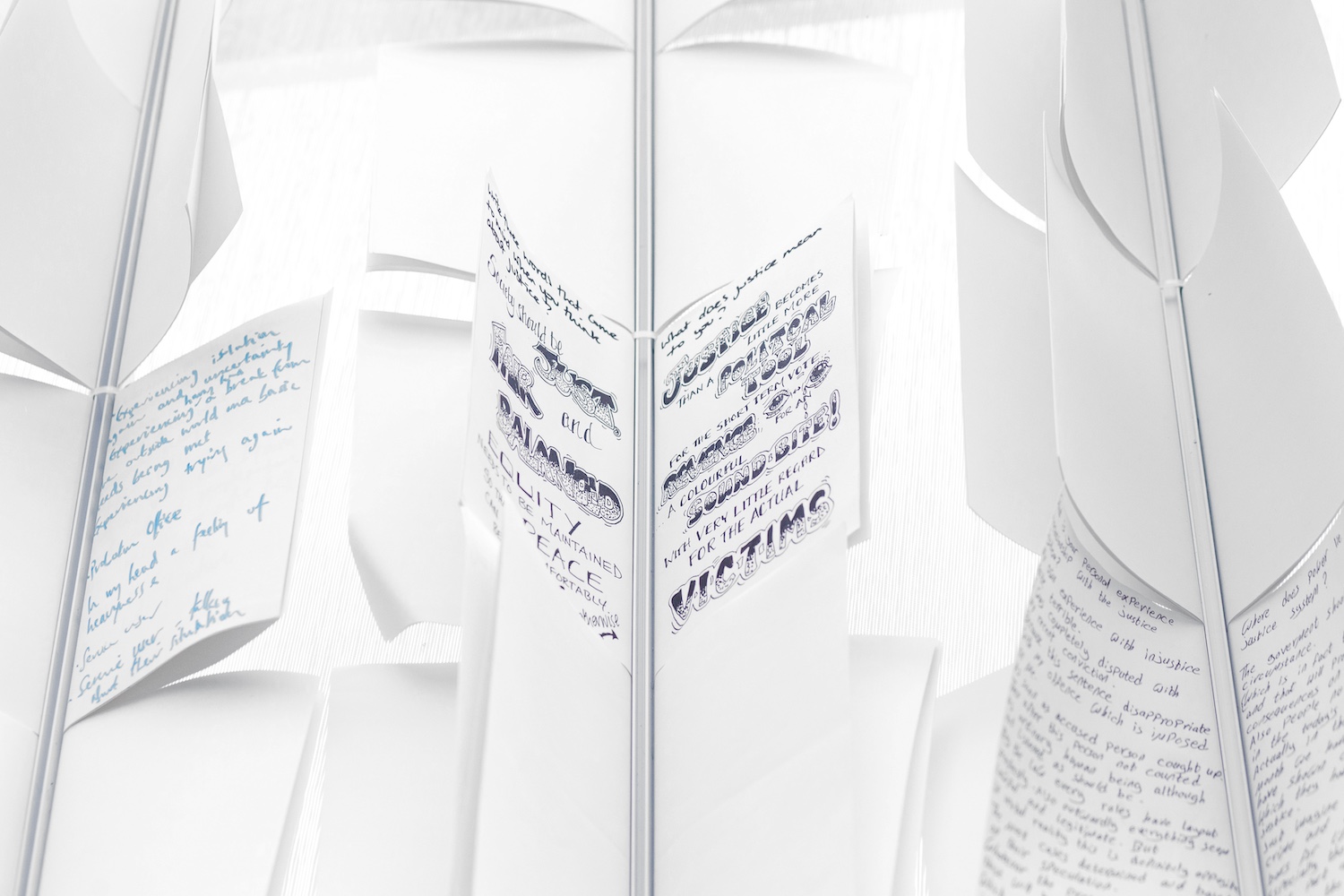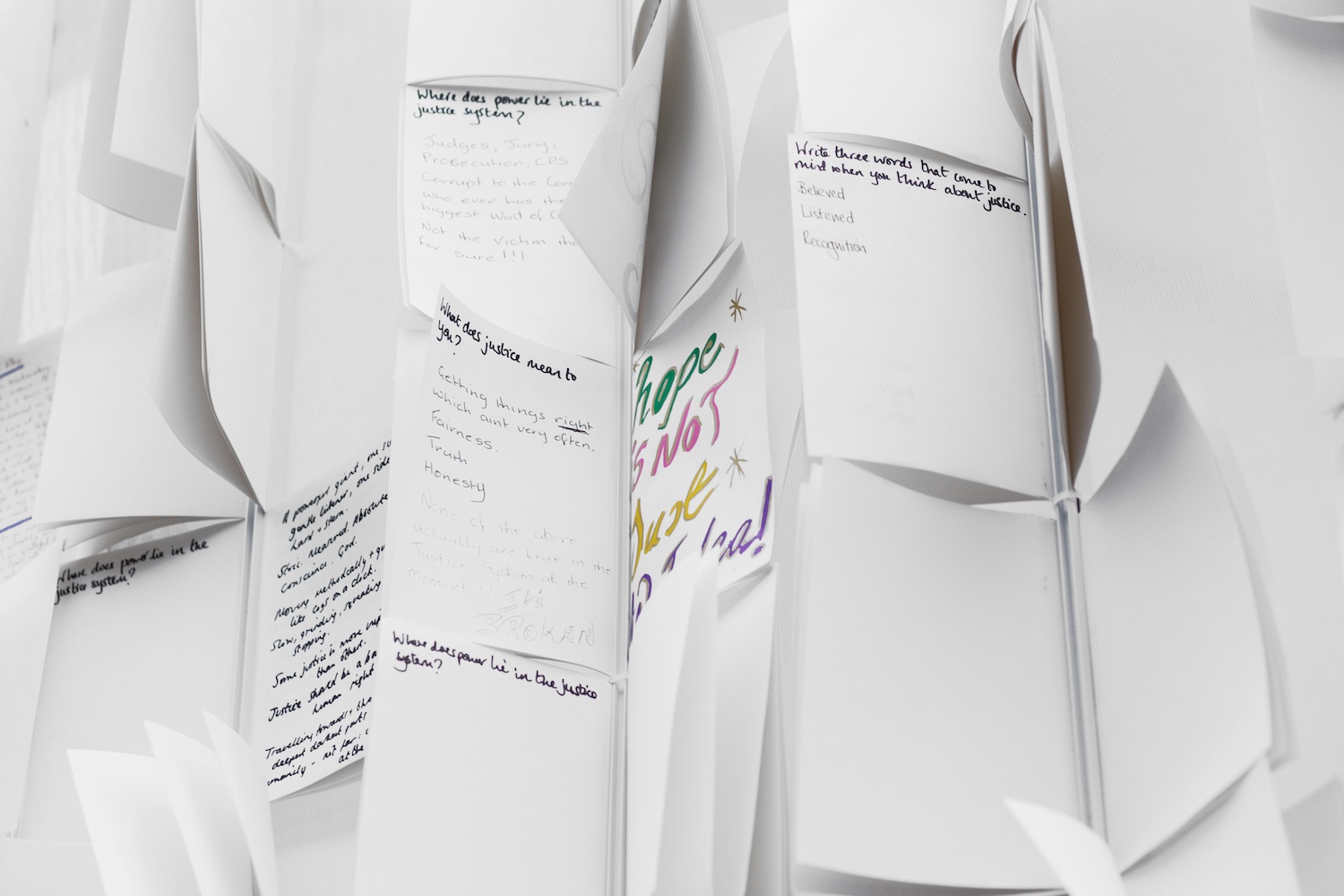(Plastic) Full Moon / Luna Llena (de plástico). Brunswick Germany 2024























Last year, we received an invitation to present a project at the Lichtparcours 2024 festival in the German city of Brunswick. It seemed like the ideal setting to develop a piece we envisioned in 2019: (Plastic) Full Moon. Fortunately, the idea appealed to the festival jury, and last June we were finally able to see it materialize.
The piece is based on an assumption that is not so far-fetched: a not-too-distant future in which the inhabitants of Earth look up at the sky and see a different moon. It will no longer be the silver, mysterious sphere that has inspired myths and legends for centuries, but a new celestial body that shines with a dull, multicolored glow, formed by countless fragments of plastic.
For decades, oceans, rivers, and landscapes have been filled with plastic waste, a consequence of excessive consumer culture and a lack of environmental awareness. The crisis has reached such a point that if we don’t stop soon, we may be forced to send the excess plastic into space.
This piece is intended to serve as a luminous reminder of the mistakes we are making. Each night, when looking at this strange spherical artifact, hanging from a massive construction crane, reflecting in the waters of a beautiful lake, the city’s inhabitants will be able to reflect on the importance of living sustainably and respecting the environment. It is thus a luminous warning urging us to change our habits before it is too late.
To carry it out, thousands of pieces of recycled plastics were assembled, forming a large spherical structure made with metal segments. The plastics were donated by the community, and the pieces were sewn together one by one by volunteers, who dedicated much time and effort to cover this immense surface.
Supported by the large crane, which is also part of the piece, its surface reveals the remnants of bottles, bags, toys, and containers, amalgamated into a tapestry that tells the consumption history of a community that, on the other hand, is very careful about recycling its plastic waste.
Every evening, the sight of this strange moon over the lake invites one to think that true progress lies in harmony with nature and in the responsibility of caring for the only home we have: Earth.
We thank the festival organization, the wonderful volunteers who helped us shape the plastic sphere during the 10 days of workshops, the neighbors who donated their plastics daily, the companies and recycling firms that also contributed a large part of the material, the city council, the Kunstverein that provided us with its wonderful space to work, and the sponsors who supported our project.
A special thanks to Kadriye for her invaluable logistical help and, of course, to Melisa Hernández for the wonderful photos.
The Moon will be shining over the lake at Kiryat Tiron Park until early October, from 7 pm to 1 am.
We invite you to come, contemplate, and take time to reflect. Additionally, the natural surroundings are unbeatable.
Assembly time: 20 days.
Exhibition time: 3 months.
———————————–
El año pasado, recibimos una invitación para presentar un proyecto en el festival Lichtparcours 2024 en la ciudad alemana de Brunswick. Nos pareció el escenario ideal para desarrollar una pieza que ideamos en el 2019: Luna Llena (de plástico). Afortunadamente, la idea gustó al jurado del festival y el pasado junio finalmente pudimos verla materializada.
La pieza se basa en un supuesto que no es tan descabellado: un futuro no muy lejano en el que los habitantes de la tierra miren al cielo y vean una luna diferente. Ya no será la esfera plateada y misteriosa que ha inspirado mitos y leyendas durante siglos, sino un nuevo astro que brilla con un resplandor opaco y multicolor, formada por innumerables fragmentos de plástico.
Durante décadas, los océanos, ríos y paisajes terrestres se han llenado de desechos plásticos, consecuencia de una cultura de consumo desmedido y una falta de conciencia ambiental. La crisis ha llegado a tal punto que si no paramos pronto quizás nos veamos obligada a enviar el exceso de plástico al espacio.
Esta pieza se ha pensado para servir como recordatorio lumínico, de los errores que estamos cometiendo. Cada noche, al mirar este extraño artefacto esférico, colgado de una inmensa grúa de construcción, reflejándose en las aguas de un hermoso lago, los habitantes de la ciudad podrán reflexionar sobre la importancia de vivir de manera sostenible y respetar el medio ambiente. Es pues una advertencia luminosa que insta a cambiar nuestros hábitos antes de que sea demasiado tarde.
Para llevarla a cabo, se han ensamblado miles de piezas de plásticos reciclados, conformando una gran estructura esférica hecha con segmentos de metal. Los plásticos fueron donados por la comunidad y las piezas fueron cosidas una a una por voluntarios, que han dedicado mucho tiempo y esfuerzo para cubrir esta inmensa superficie.
Sostenida por la gran grúa que también forma parte de la pieza, su superficie revela los restos de botellas, bolsas, juguetes y envases, amalgamados en un tapiz que narra la historia del consumo de una comunidad que, por otro lado, hay que decir que es muy cuidadosa con el reciclaje de sus residuos plásticos.
Cada anochecer, la vista de esta extraña luna sobre el lago invita a pensar que el verdadero progreso radica en la armonía con la naturaleza y en la responsabilidad de cuidar el único hogar que tenemos: la Tierra.
Queremos dar las gracias a la organización del festival, a los maravillosos voluntarios que nos ayudaron a dar forma plástica a la esfera, durante los 10 días que duraron los talleres, a los vecinos que nos donaron diariamente sus plásticos, a las empresas y compañías de reciclaje que también aportaron gran parte del material, al ayuntamiento, al Kunstverein que nos brindó su maravilloso espacio para trabajar y a los patrocinadores, que apostaron por nuestro proyecto.
Un agradecimiento especial a Kadriye por su inestimable ayuda logística y, por supuesto, a Melisa Hernández por las maravillosas fotos.
La Luna estará luciendo sobre el lago del Kiryat Tiron Park hasta principios de octubre, en horario de 7 pm a 1 am.
Os invitamos a acercaros, contemplar y tomar tiempo para reflexionar. Además, el entorno natural es inmejorable.
Tiempo de montaje: 20 días.
Tiempo de exhibición: 3 meses

















































































